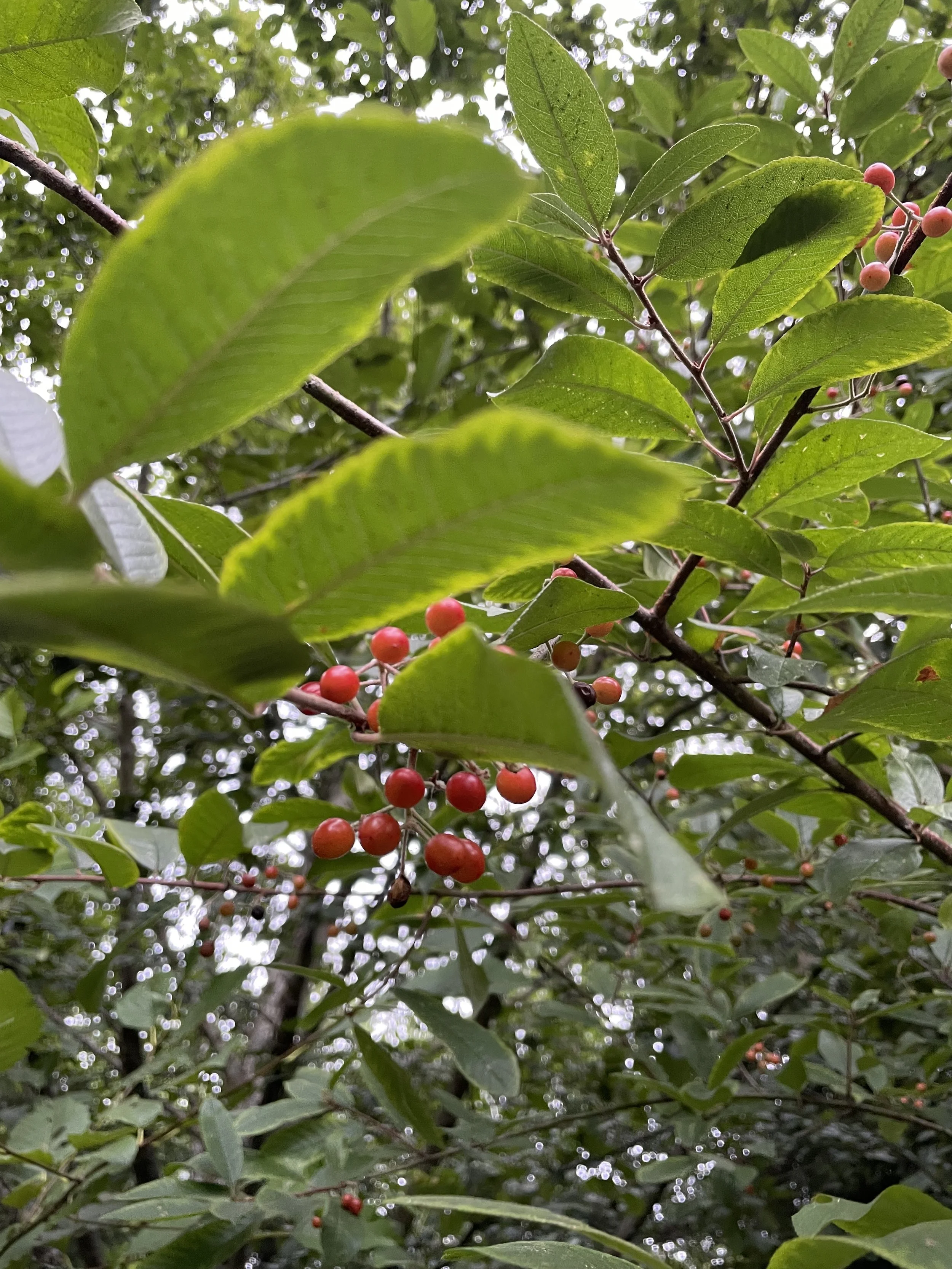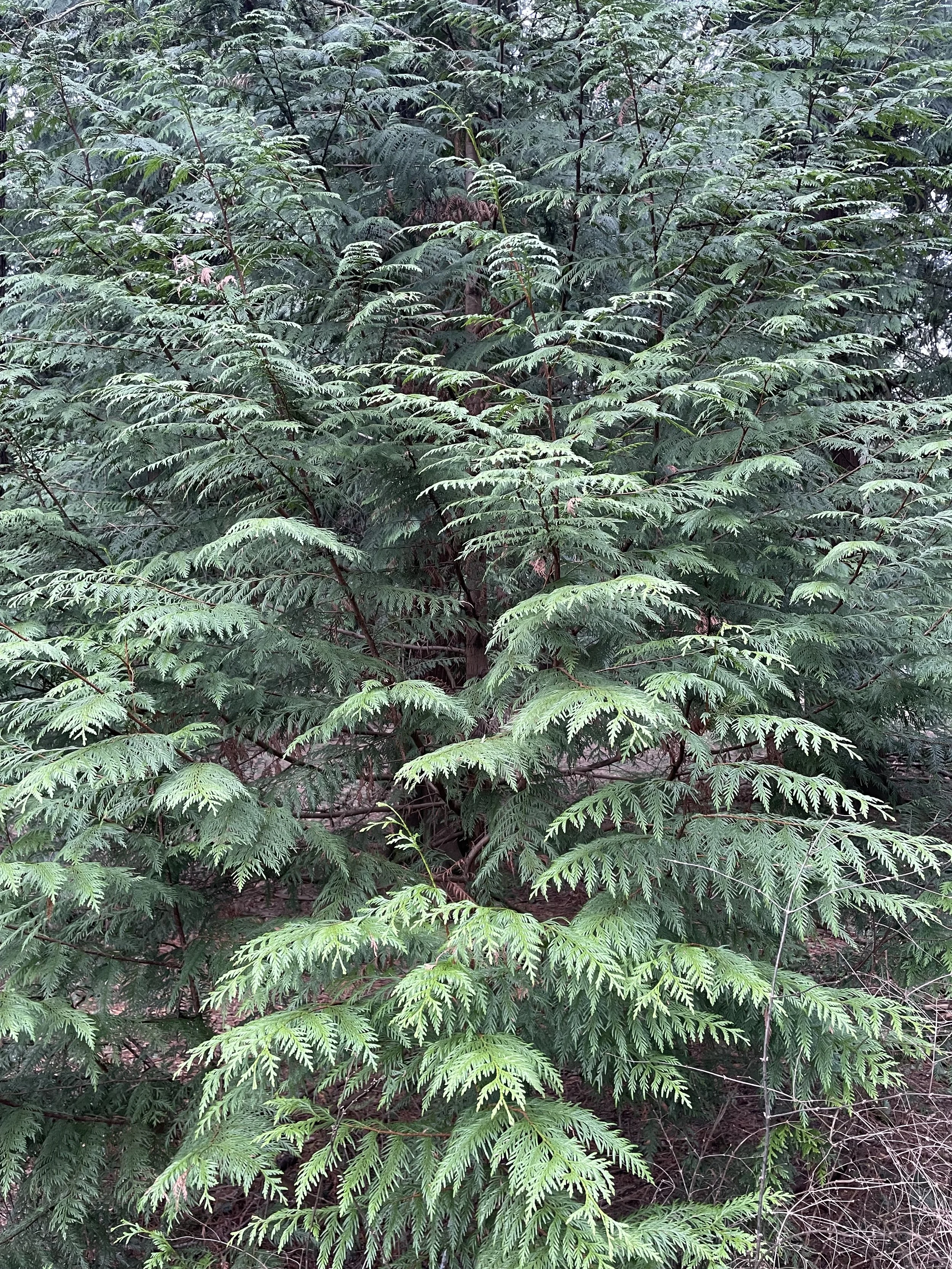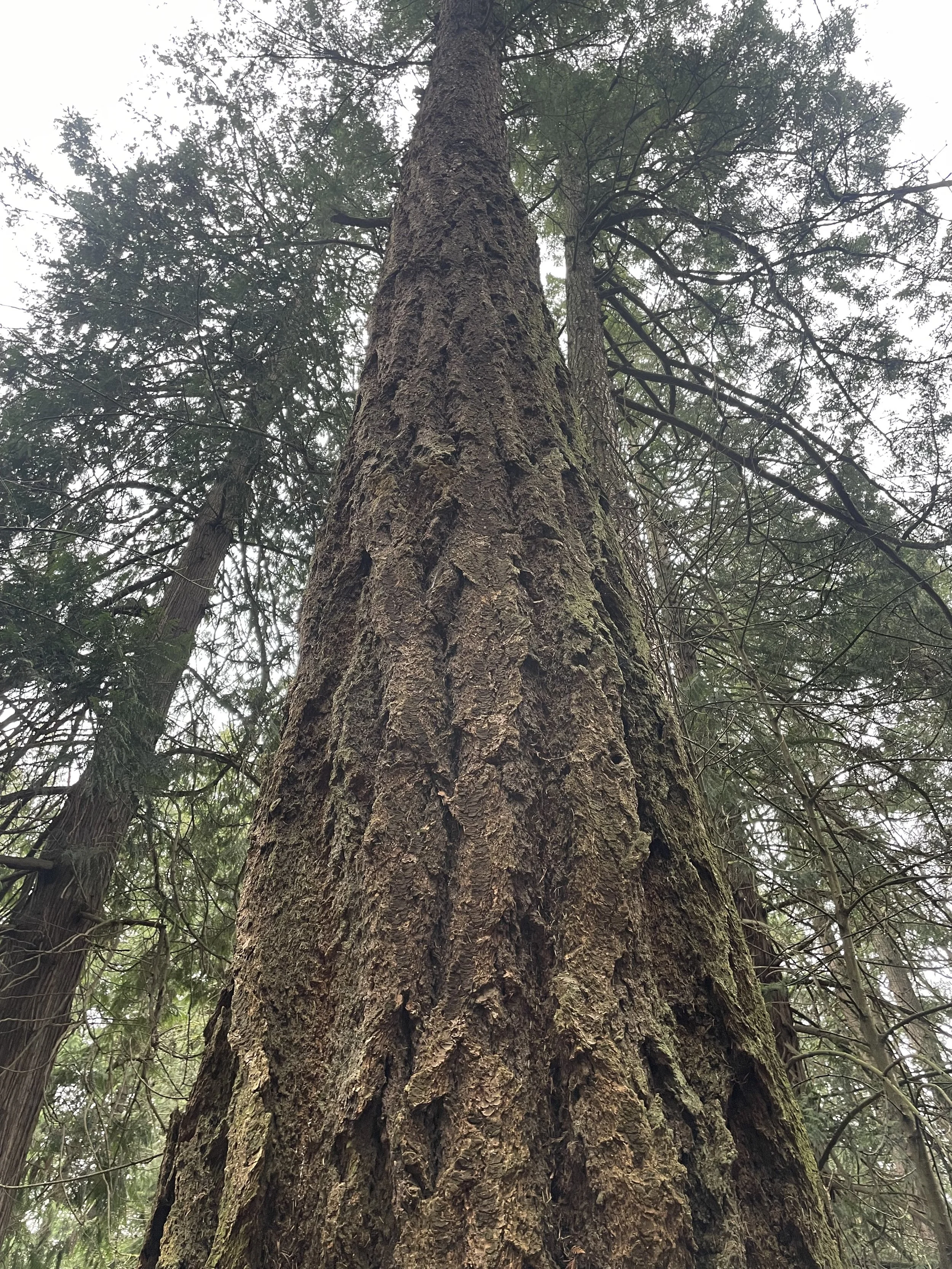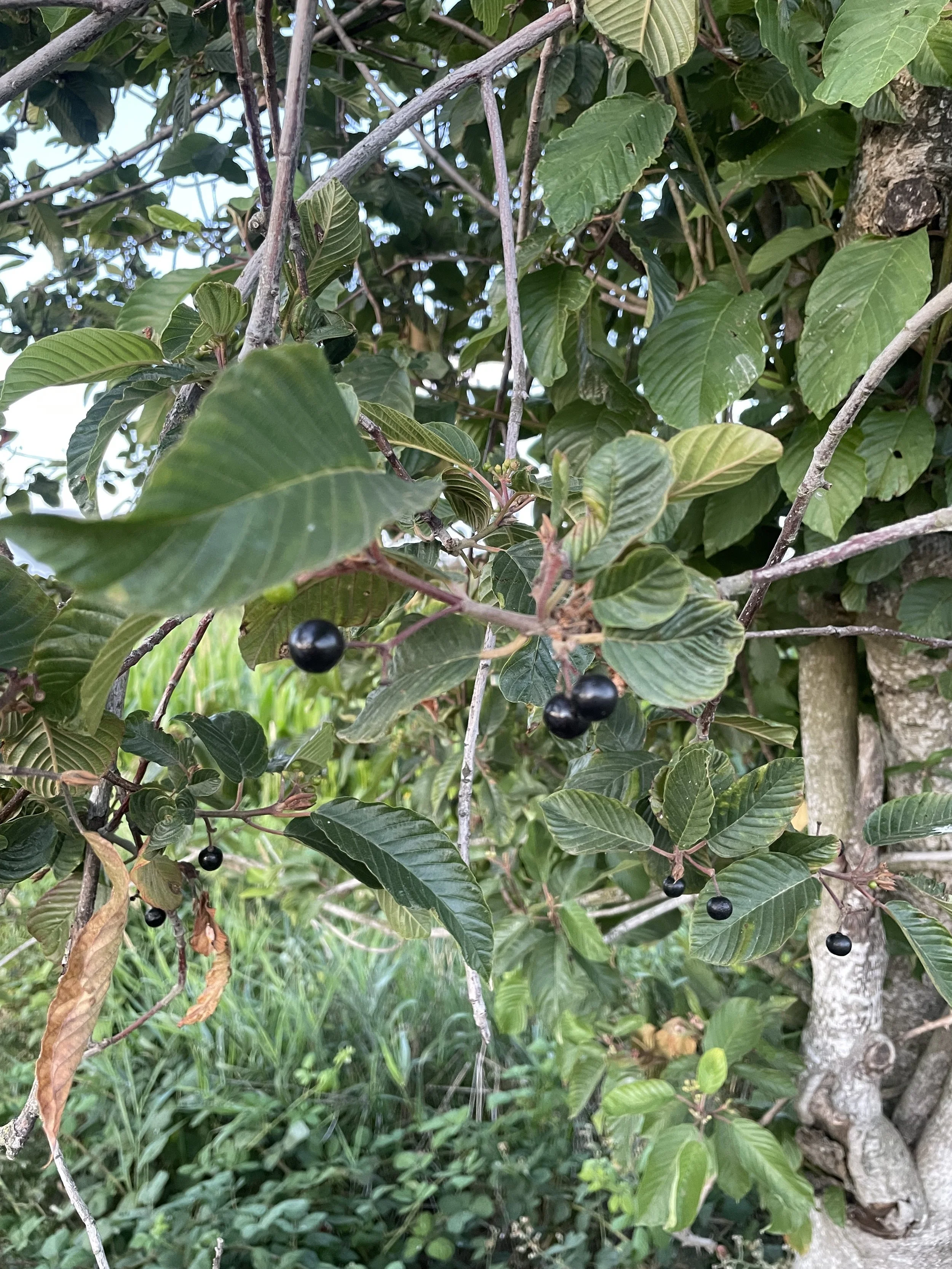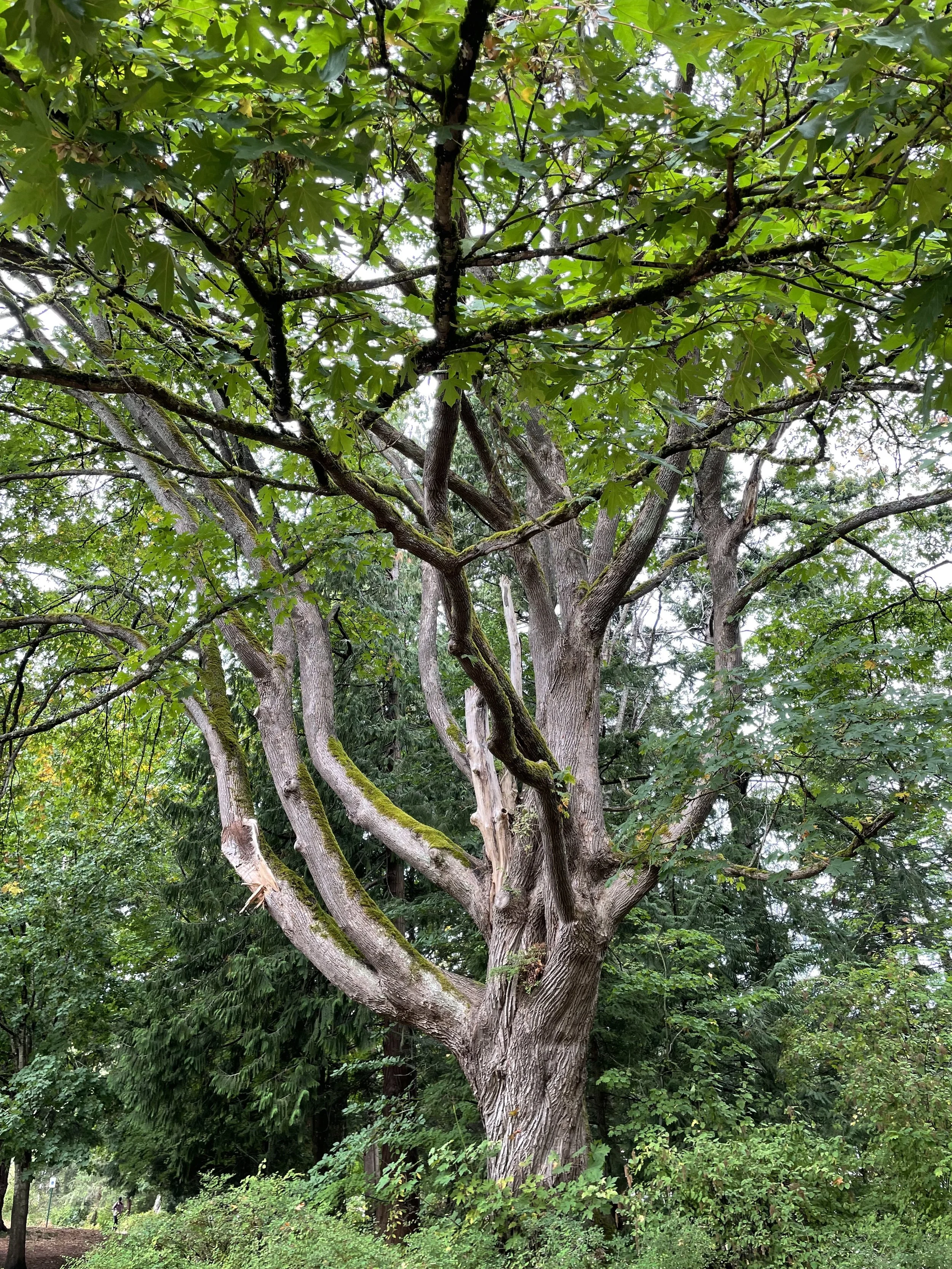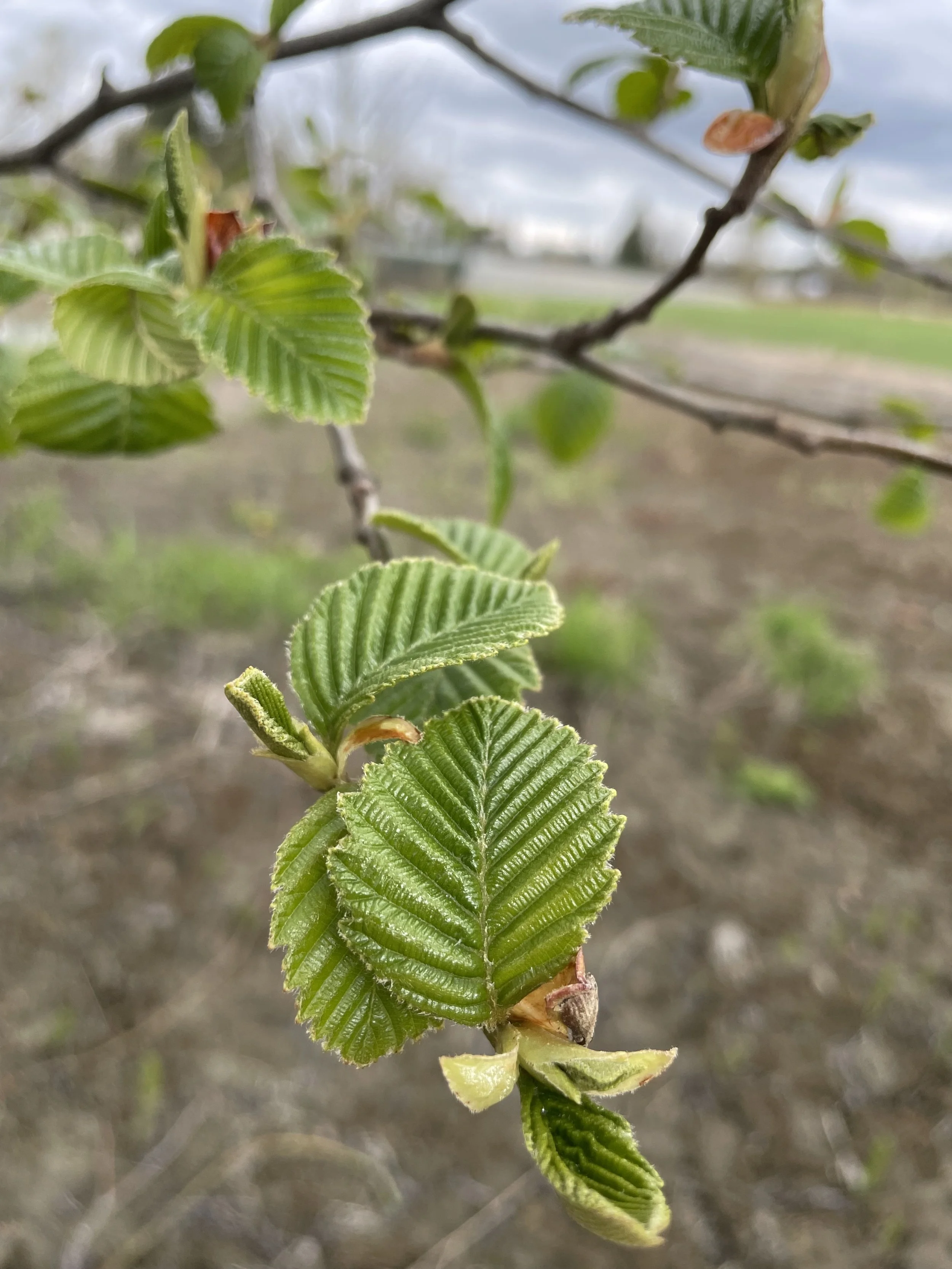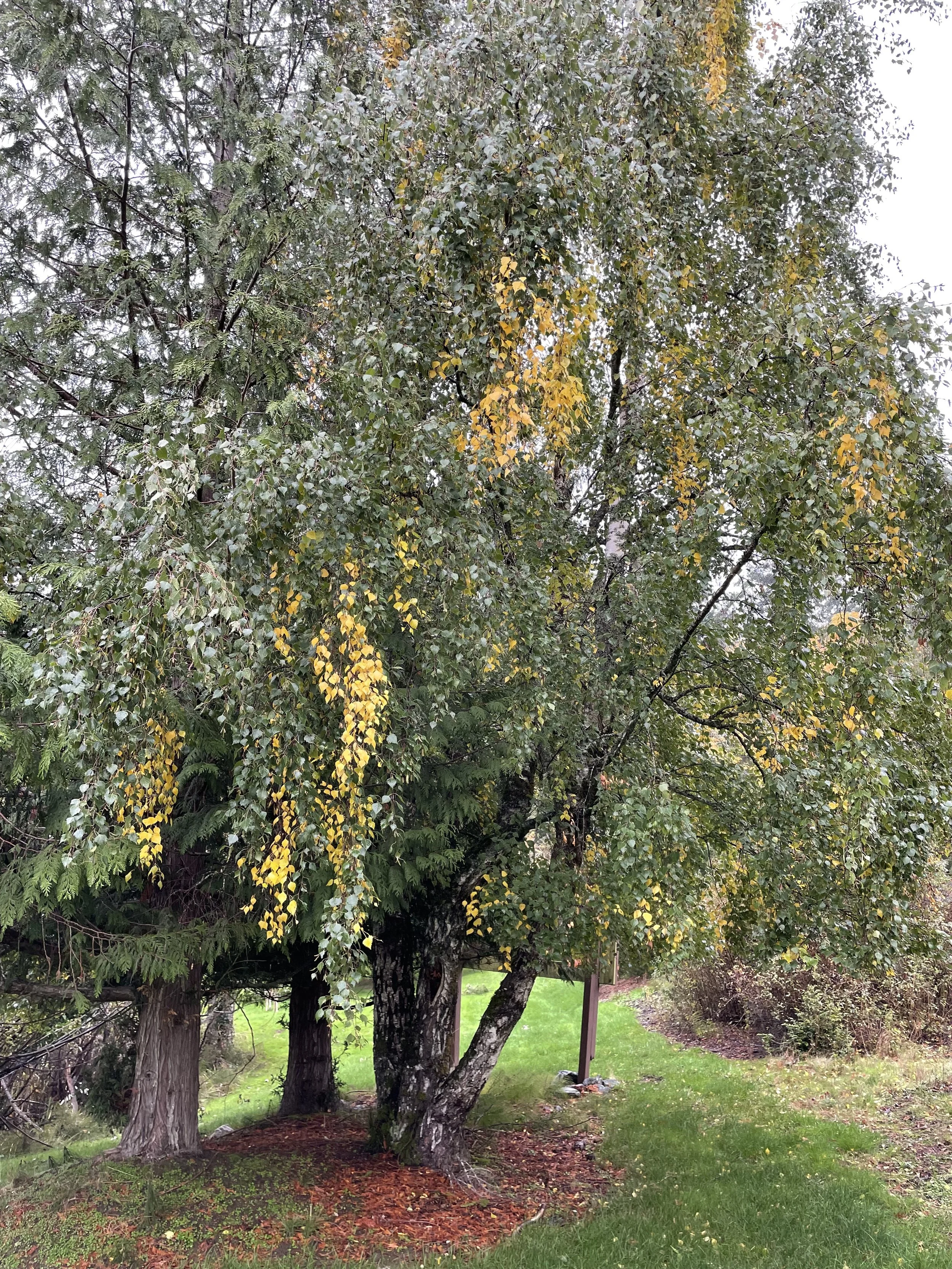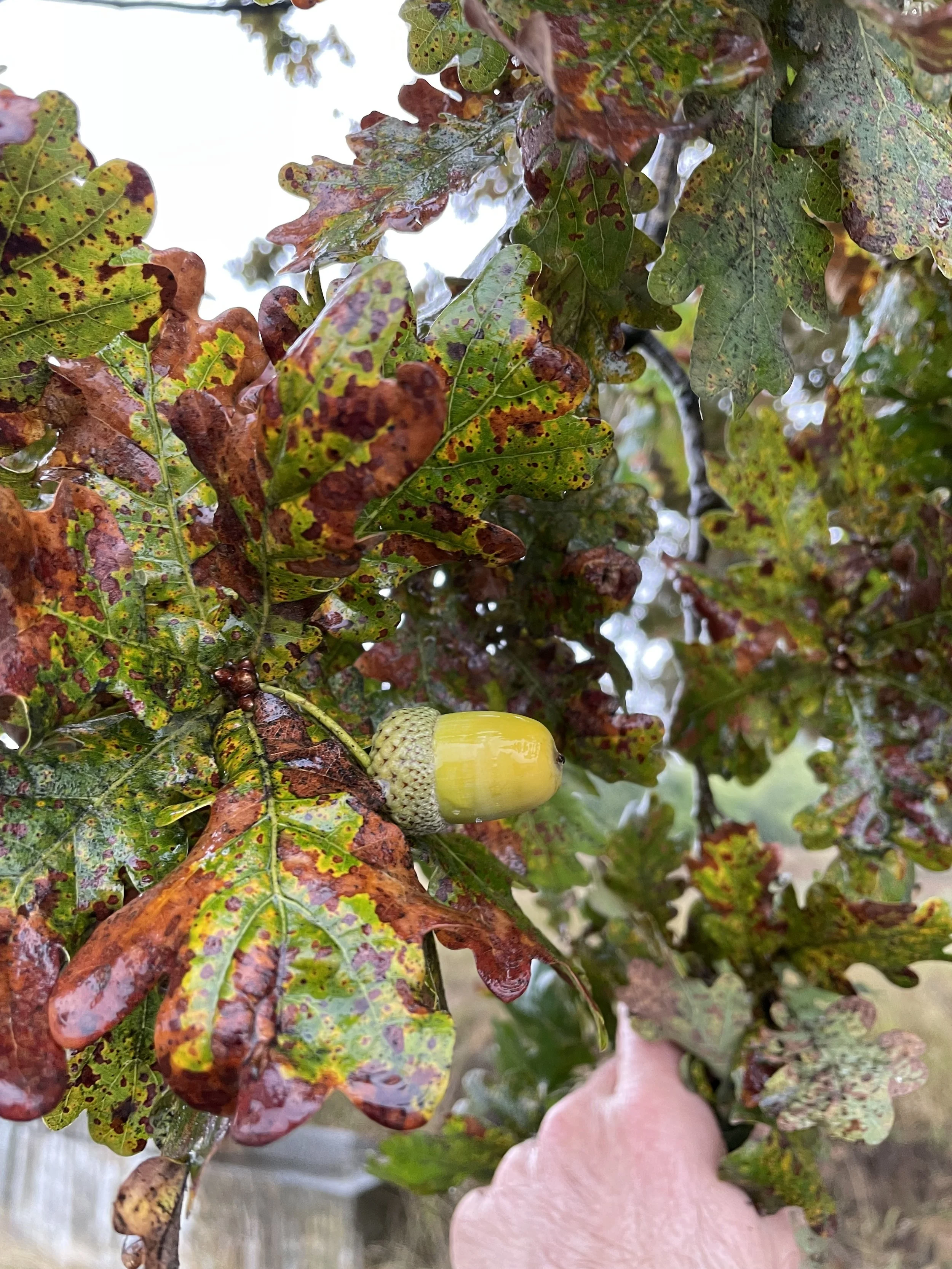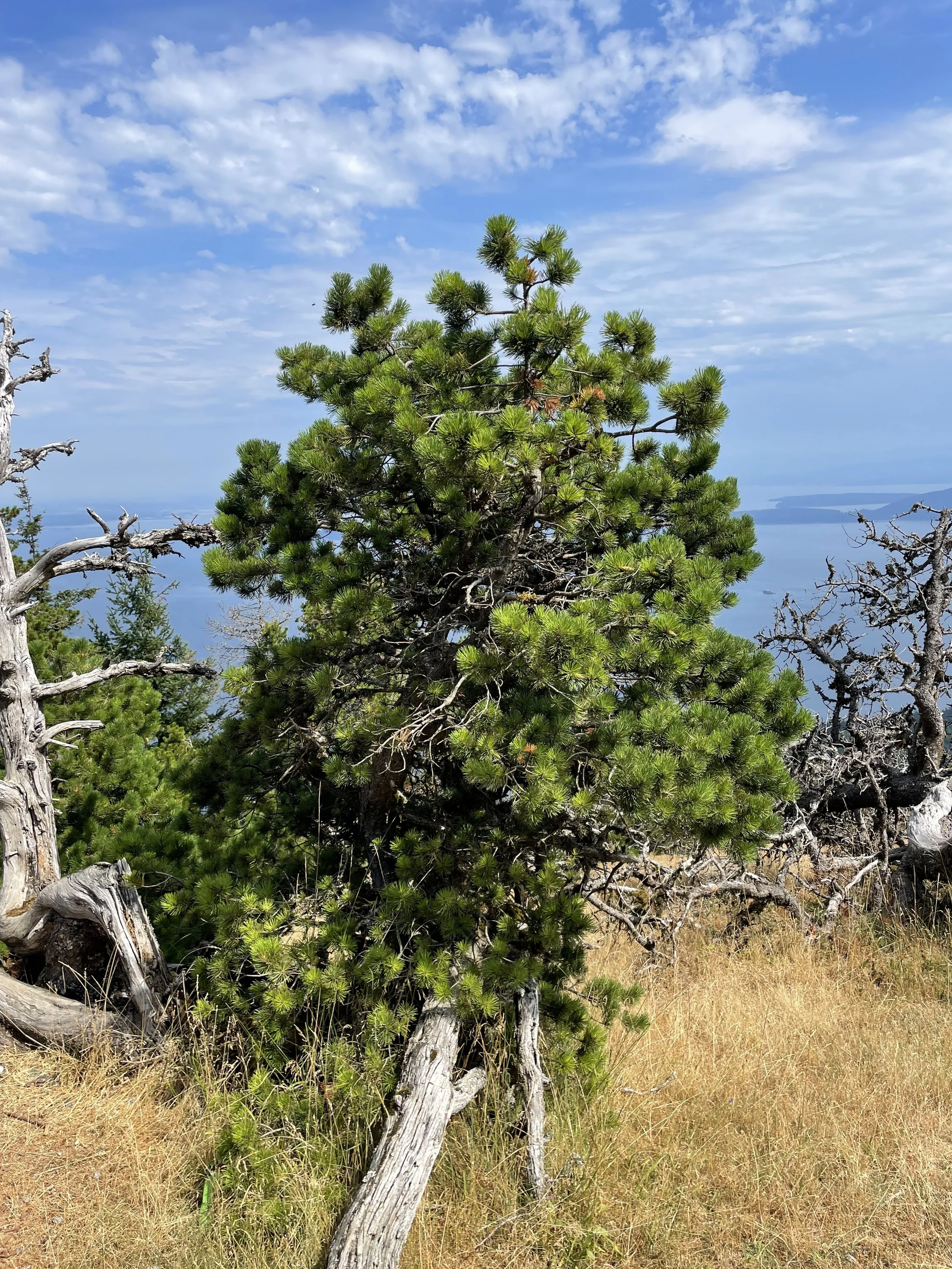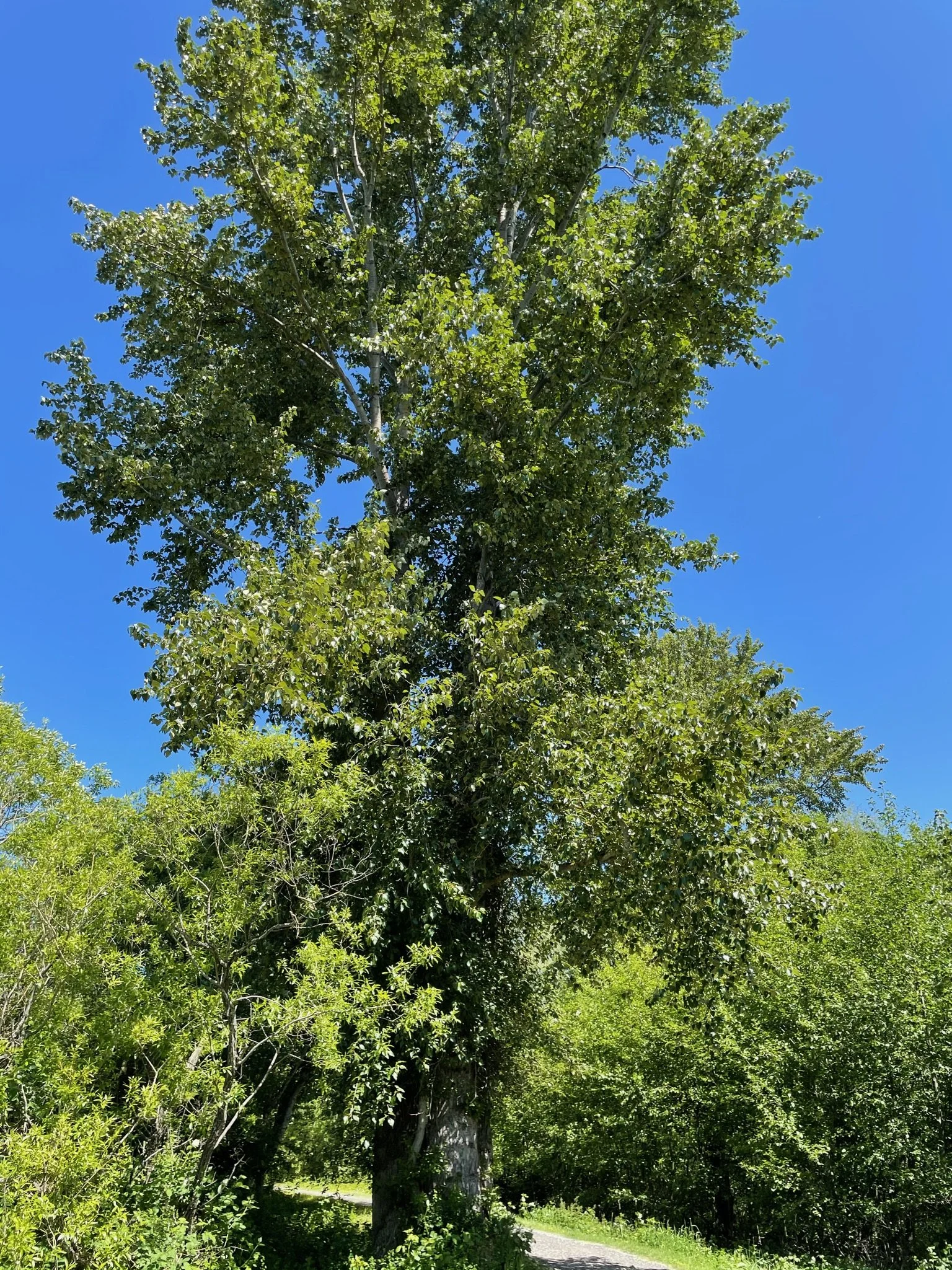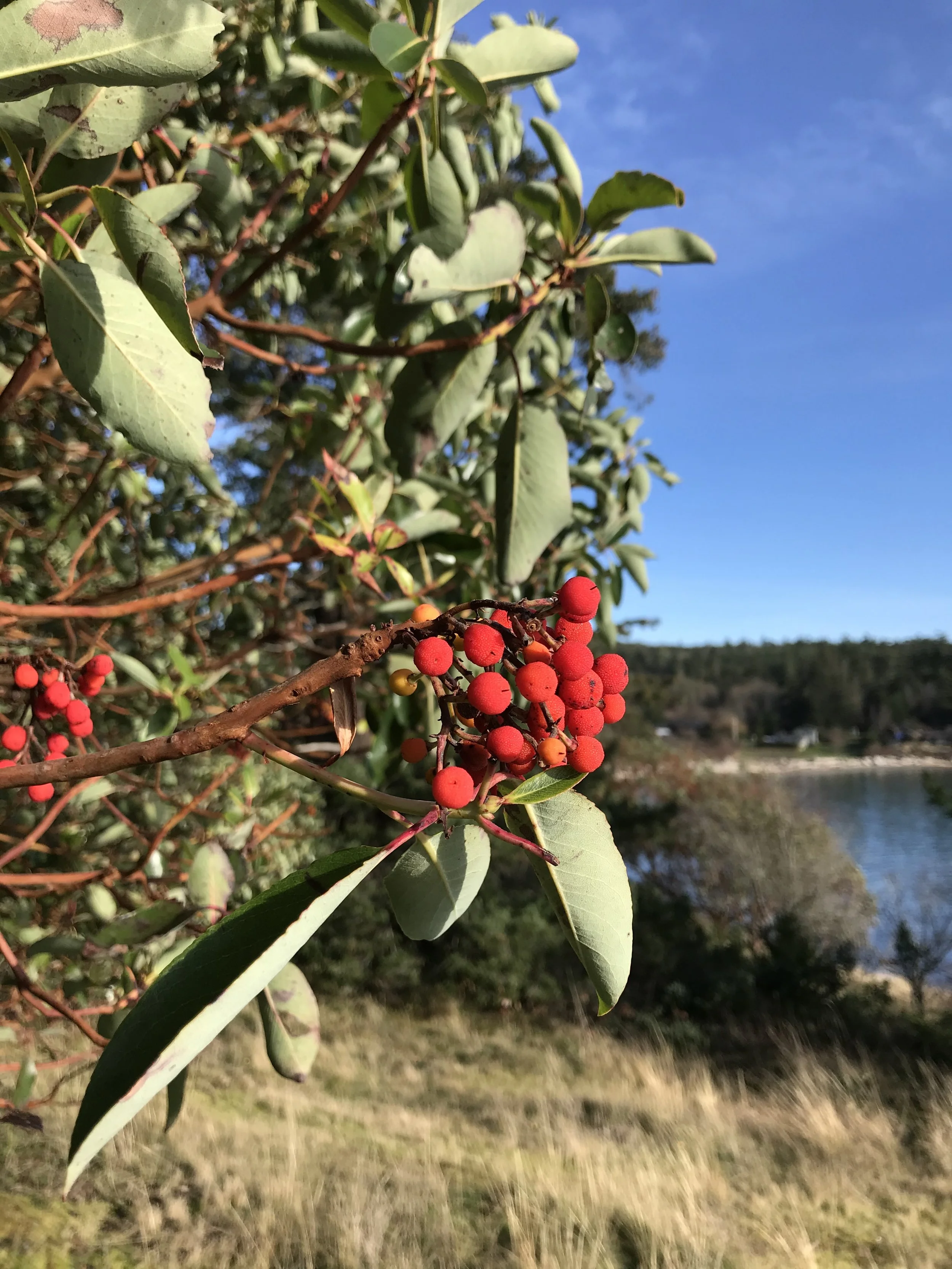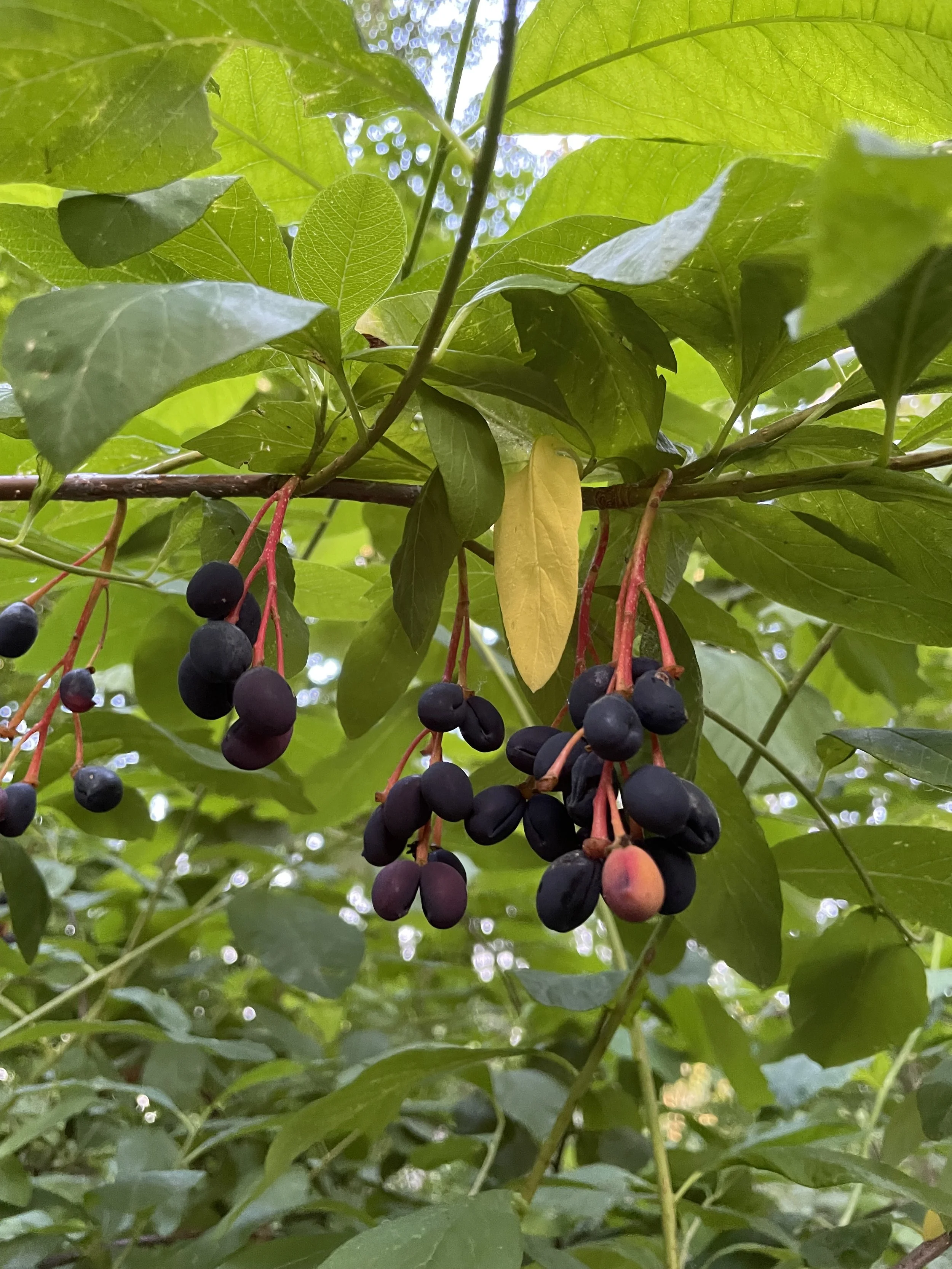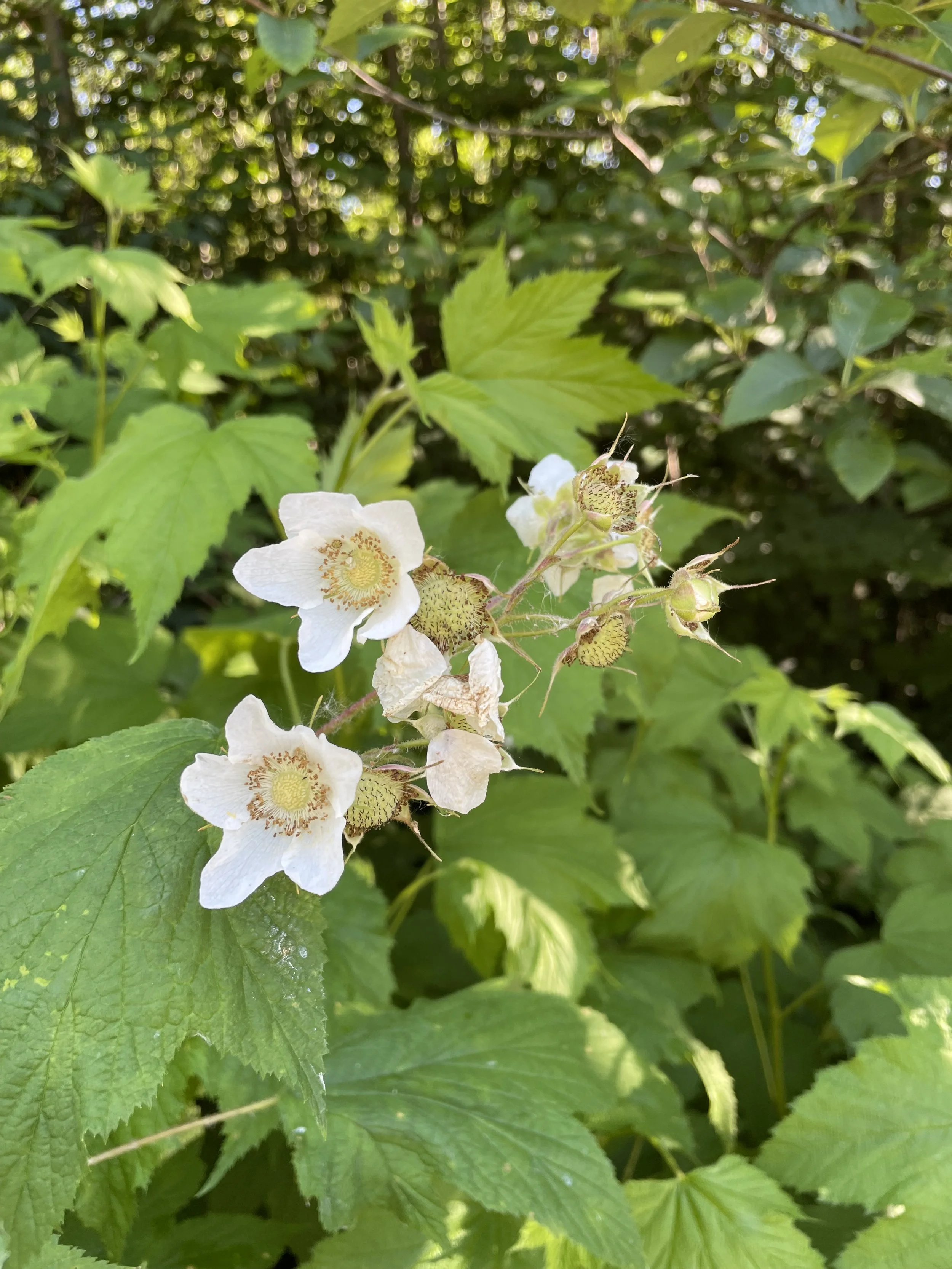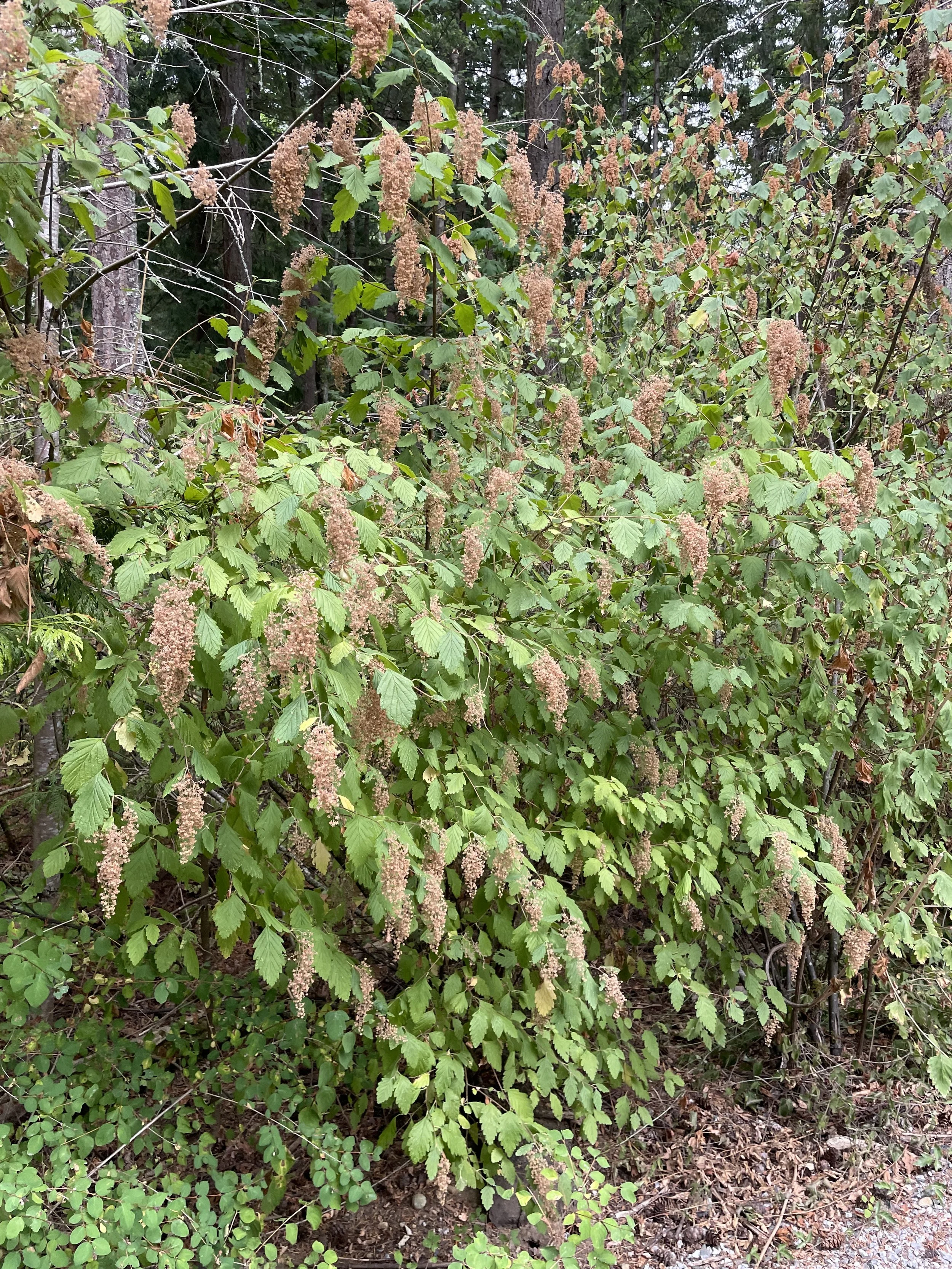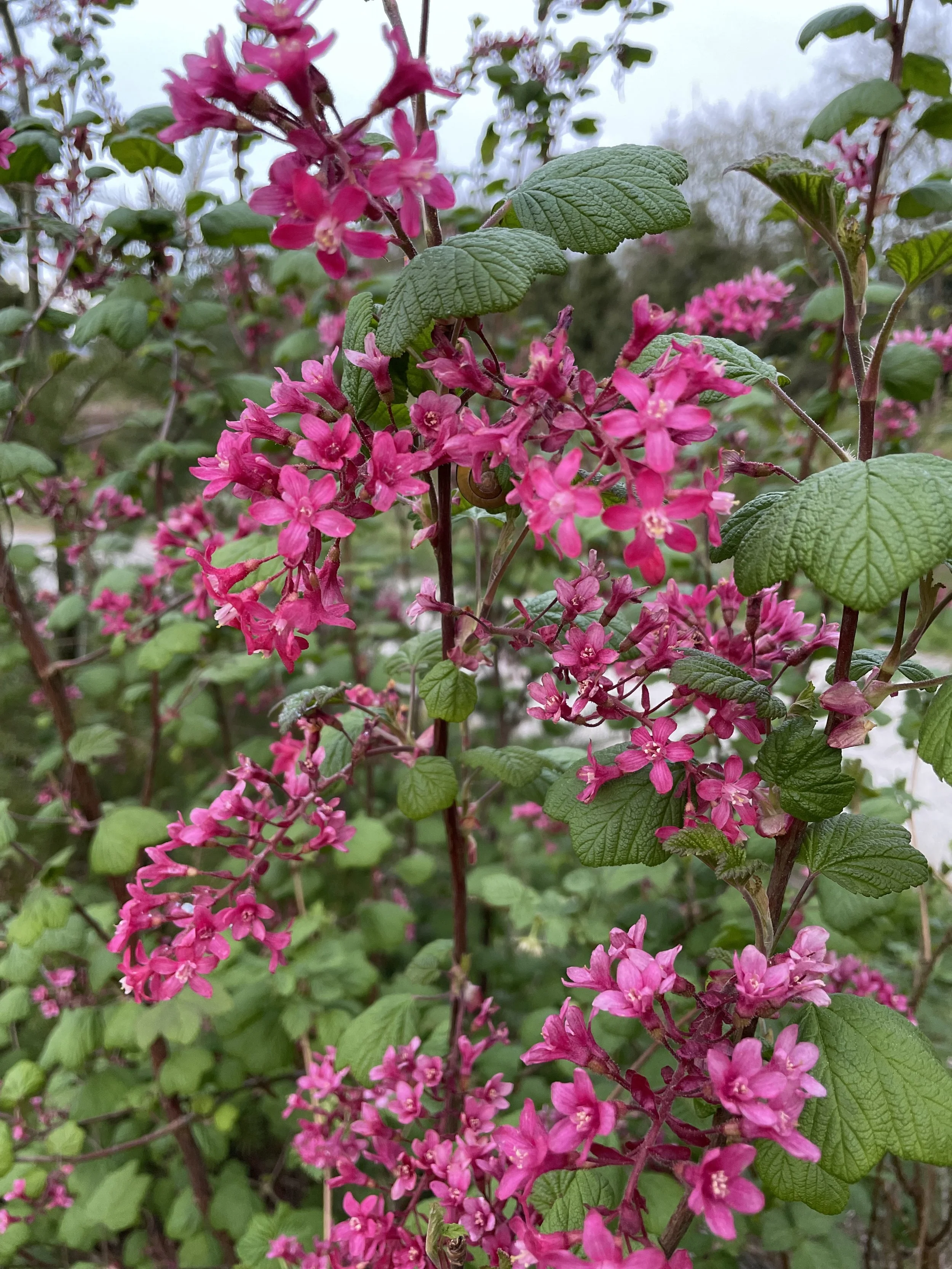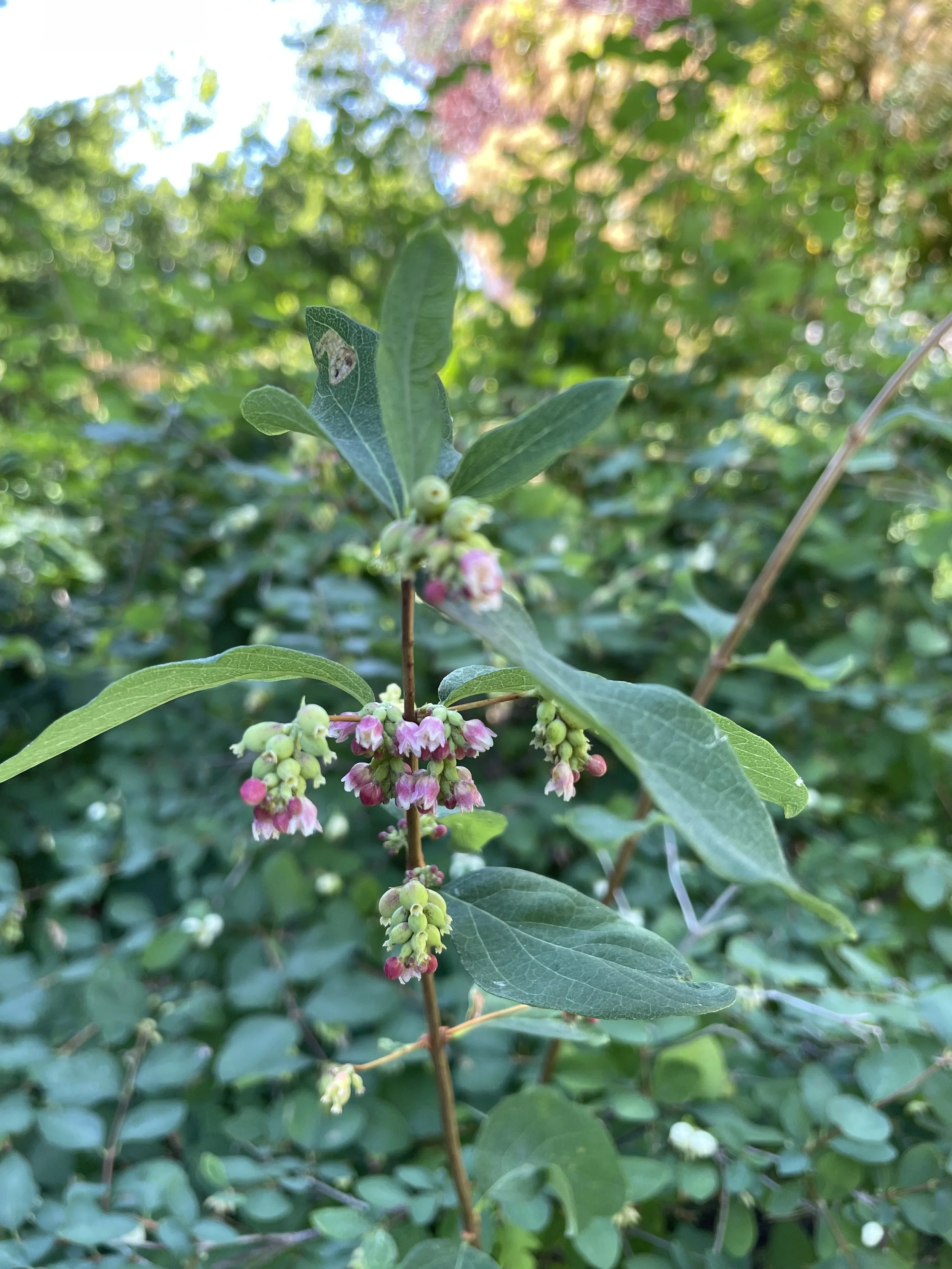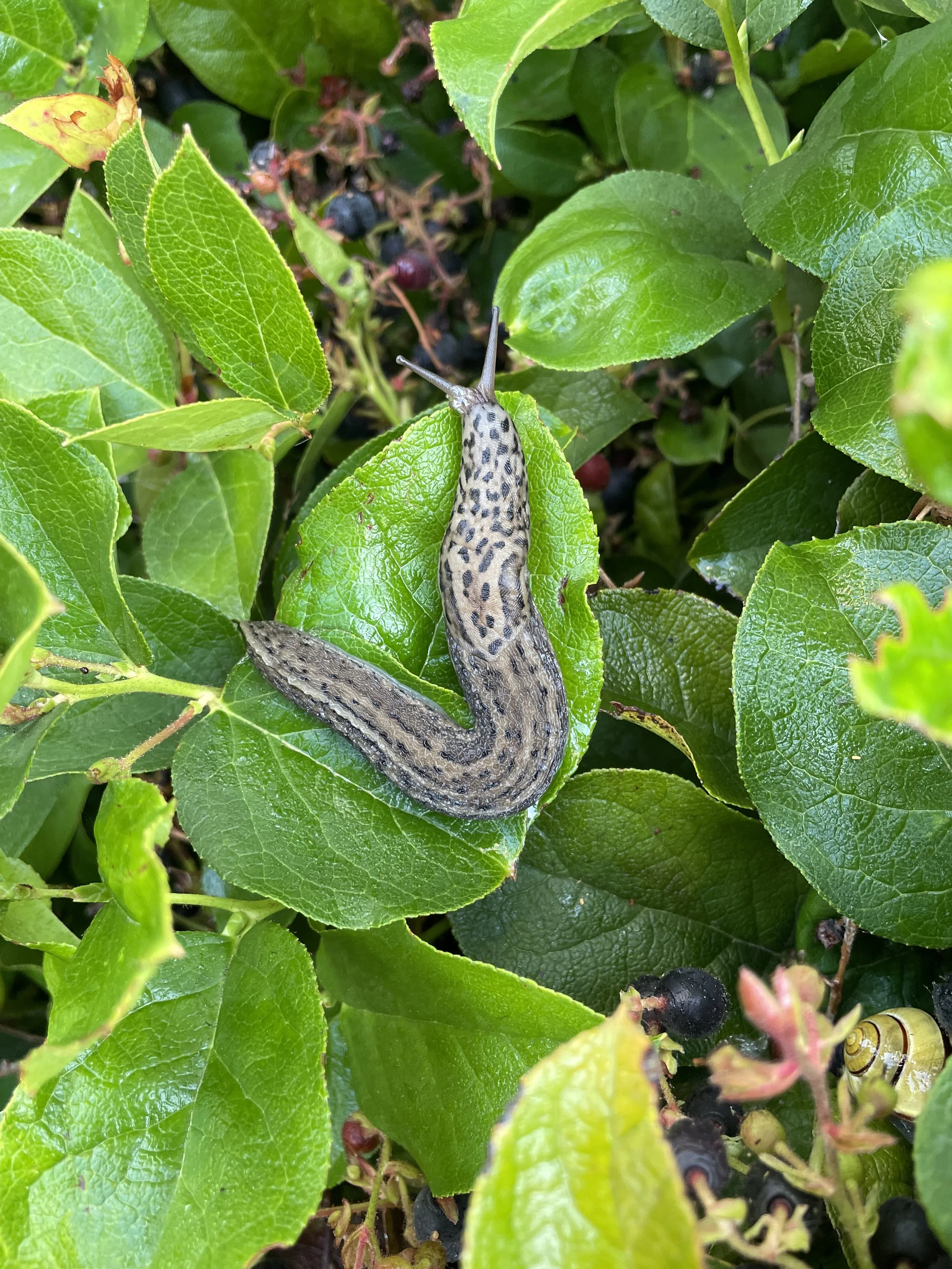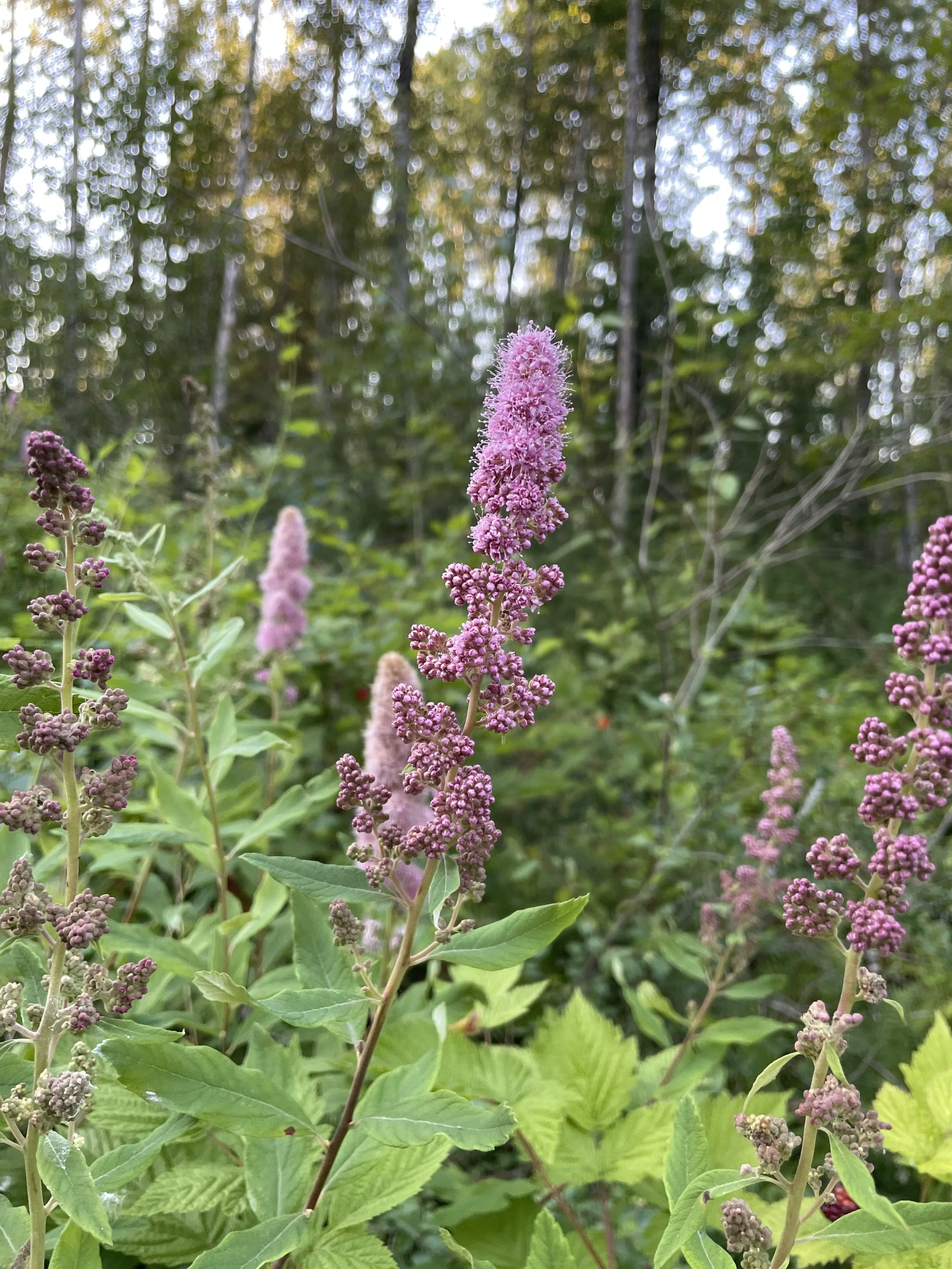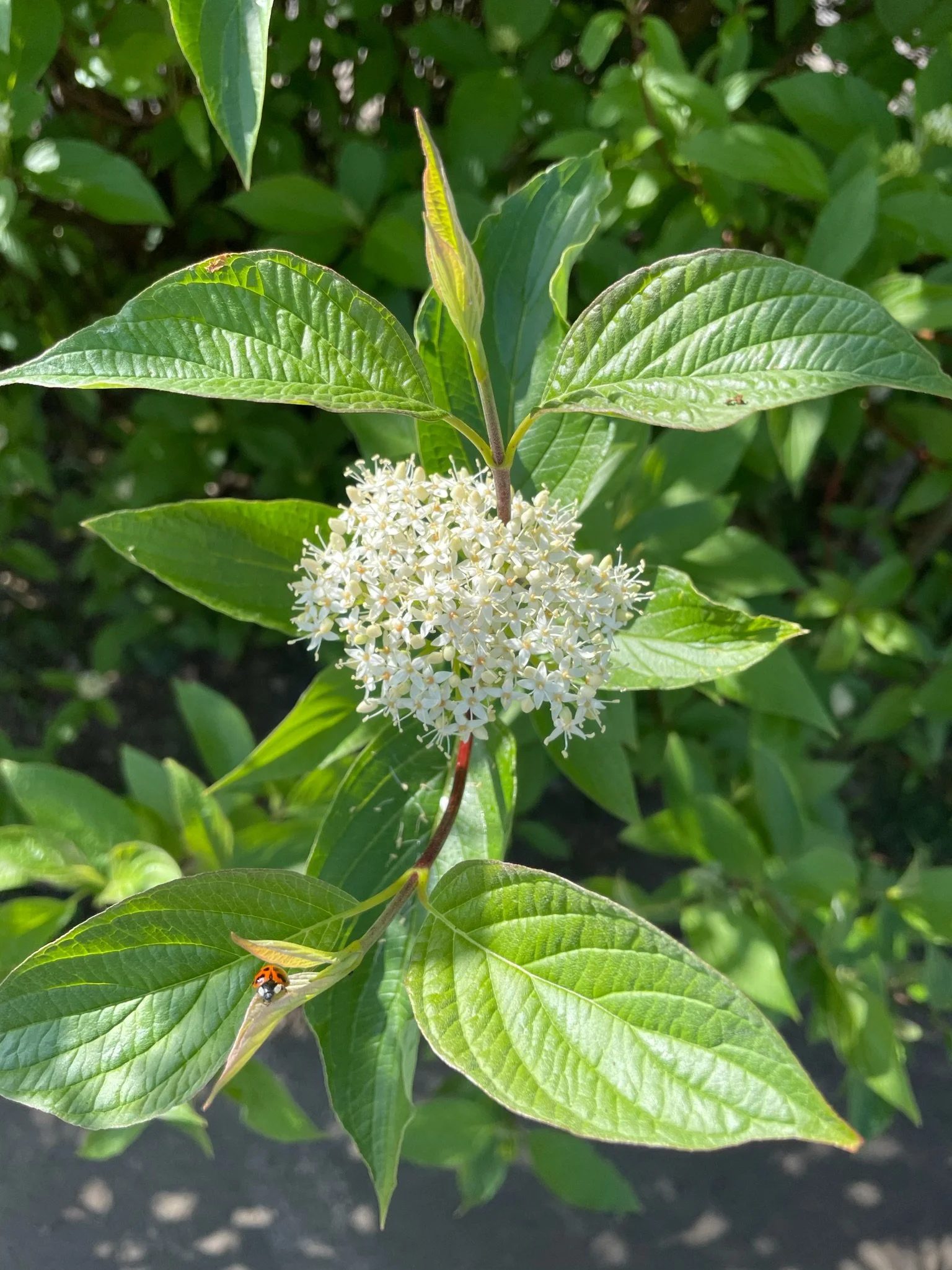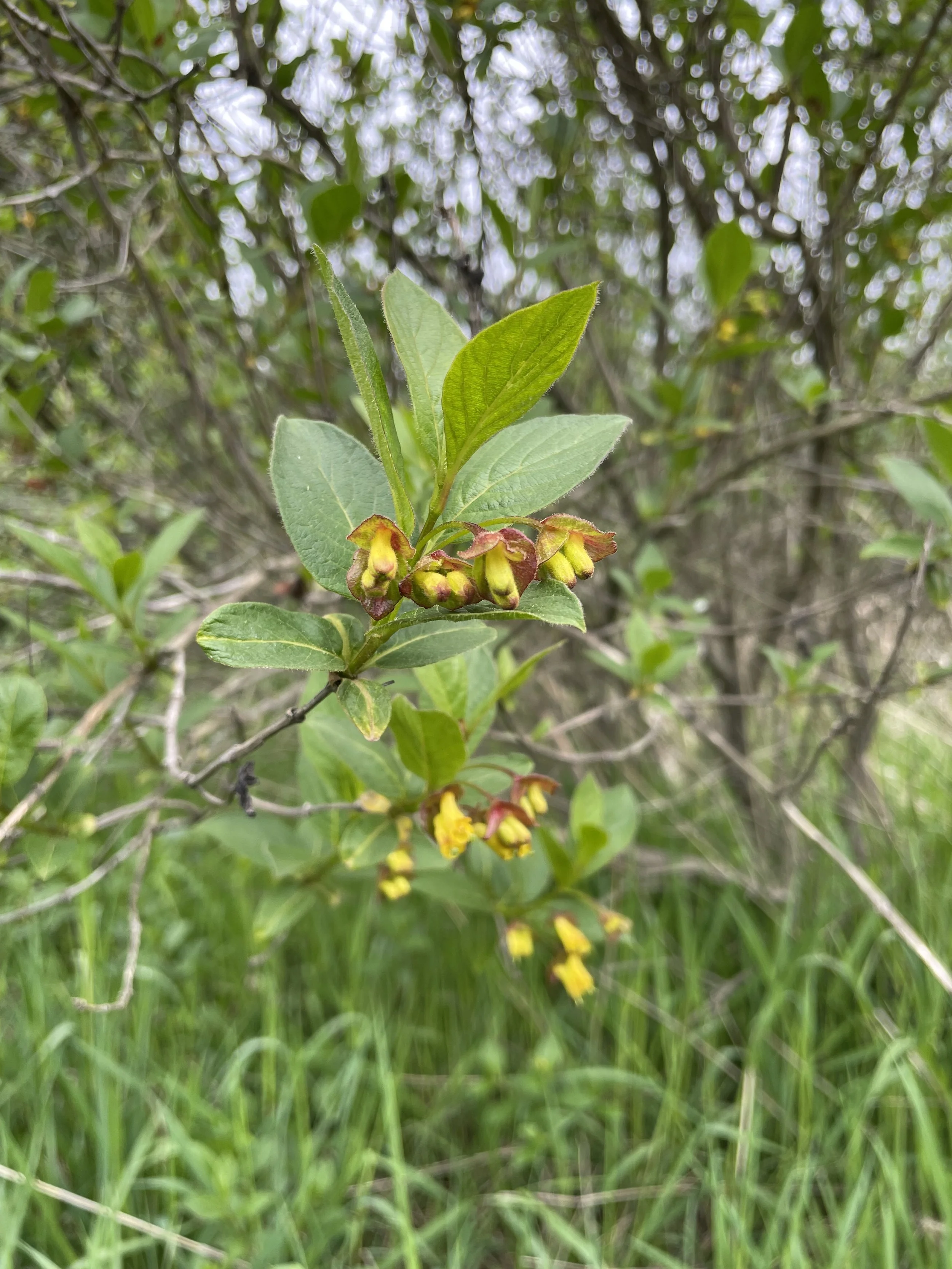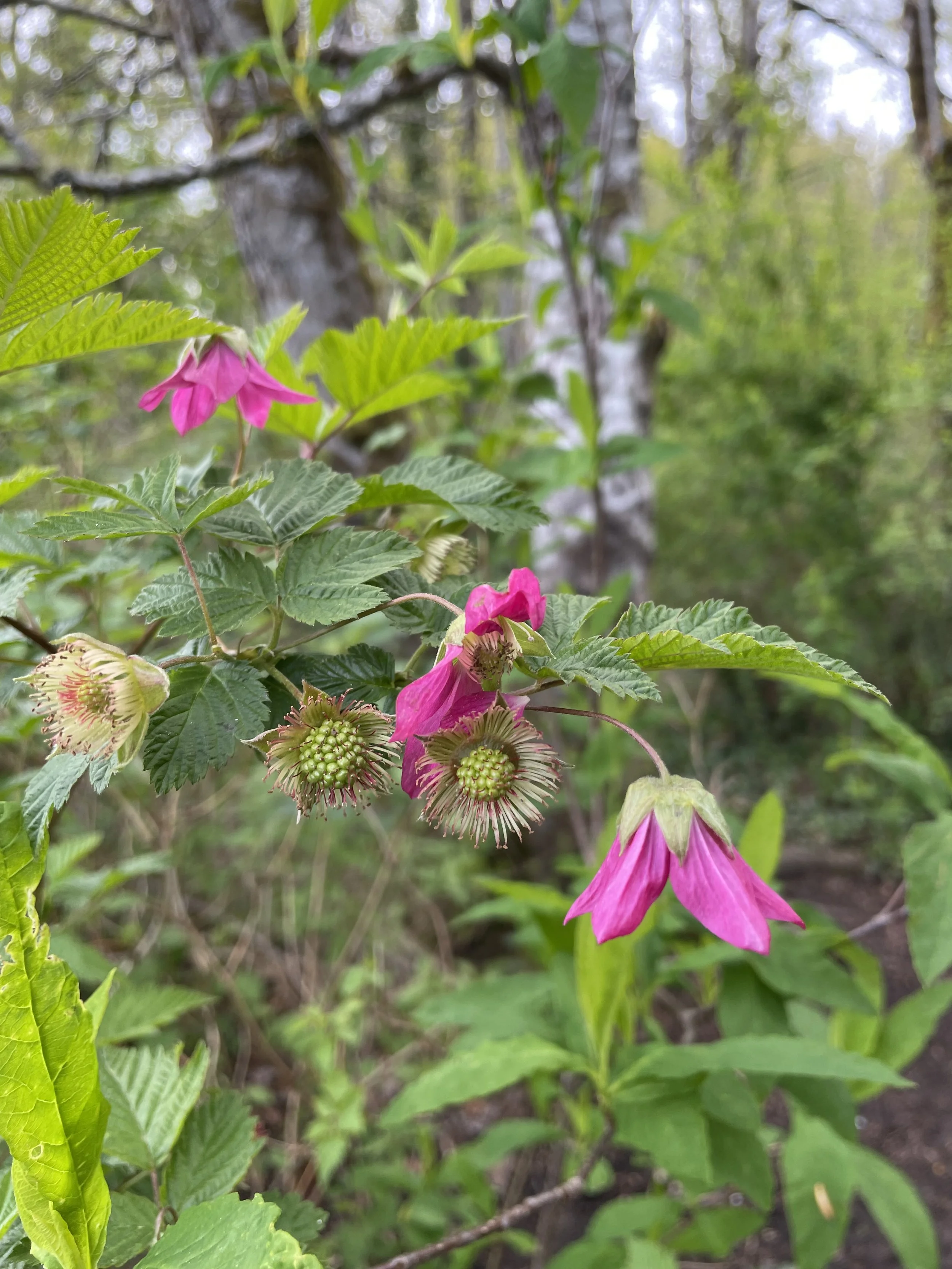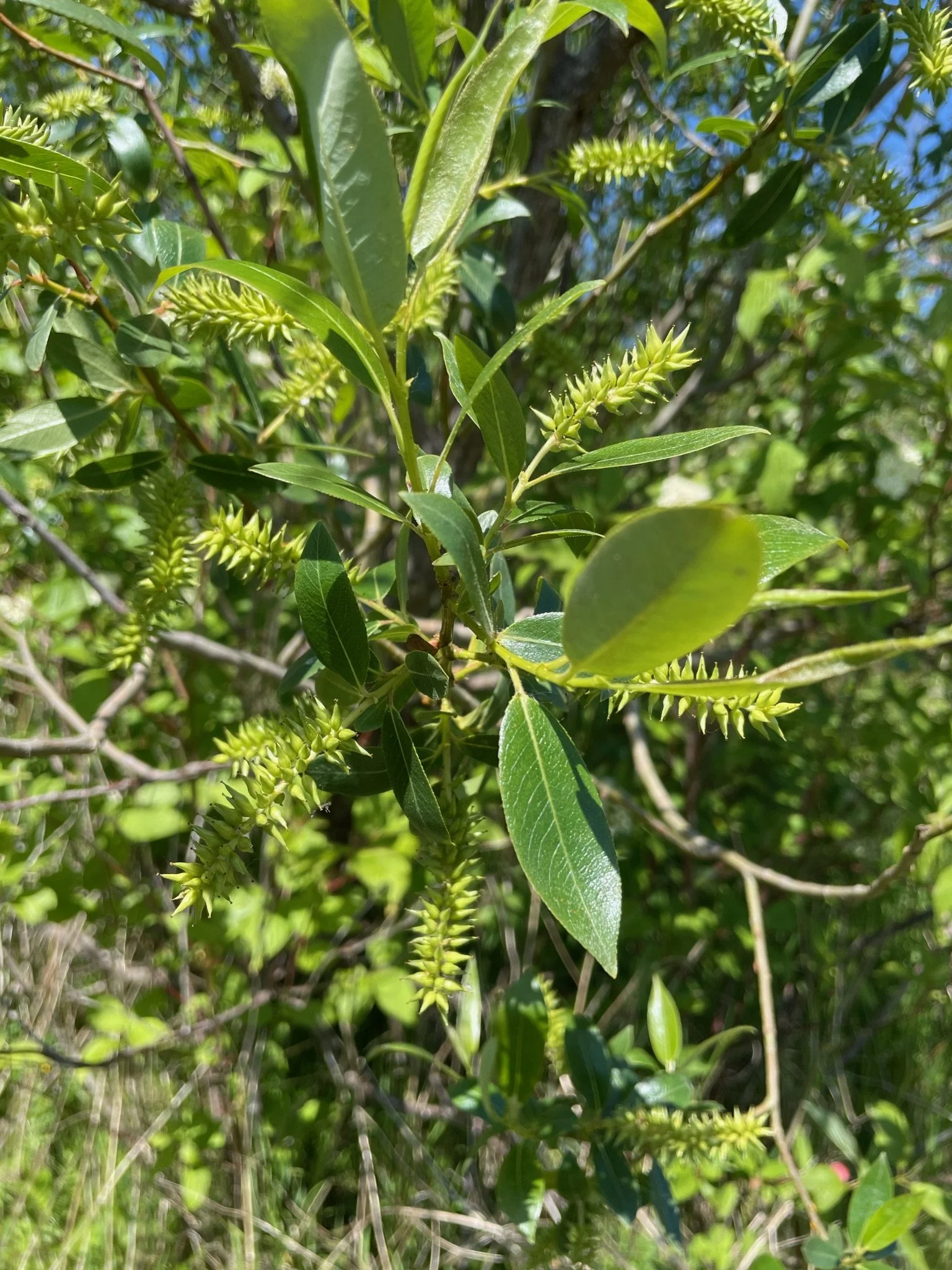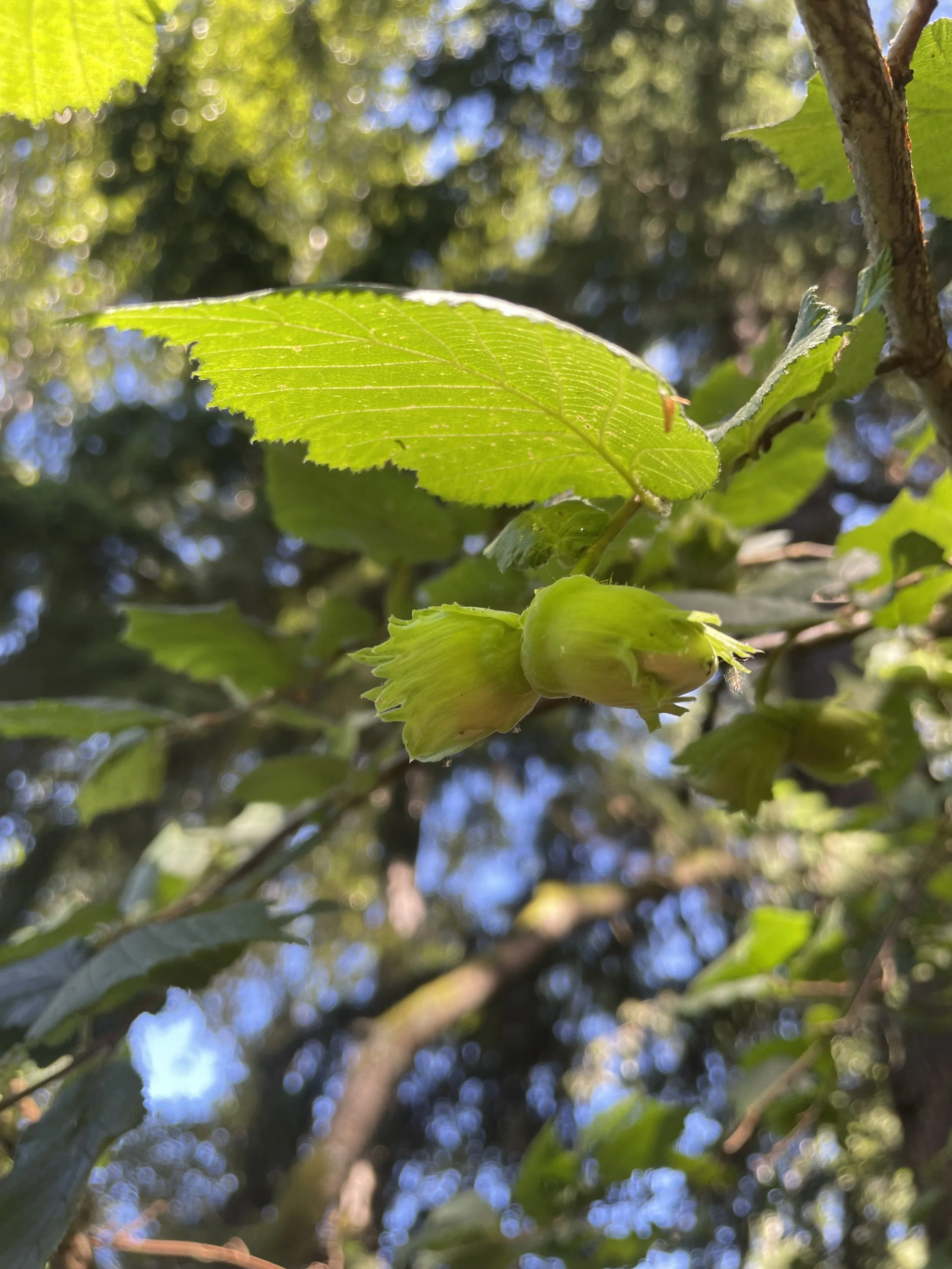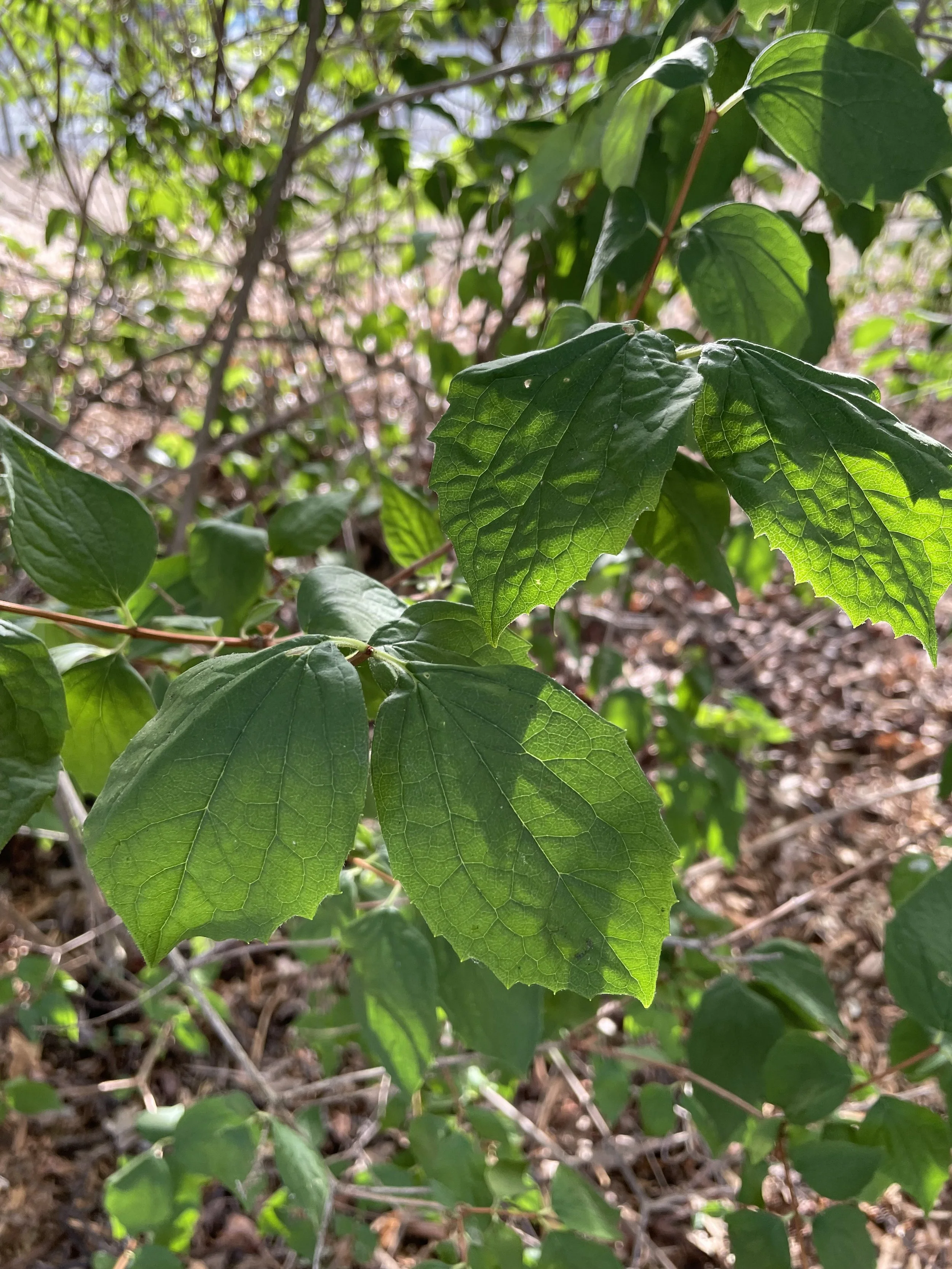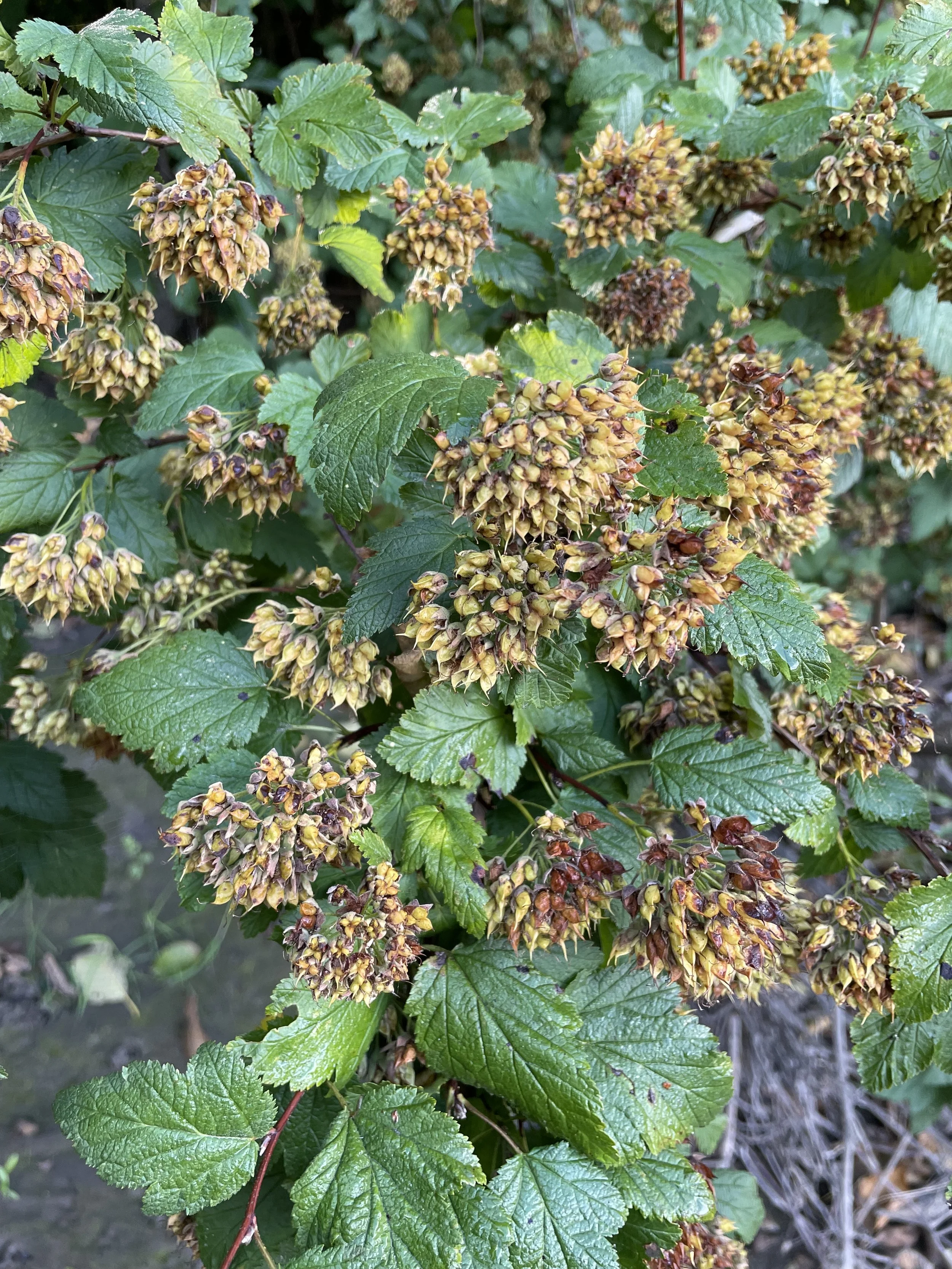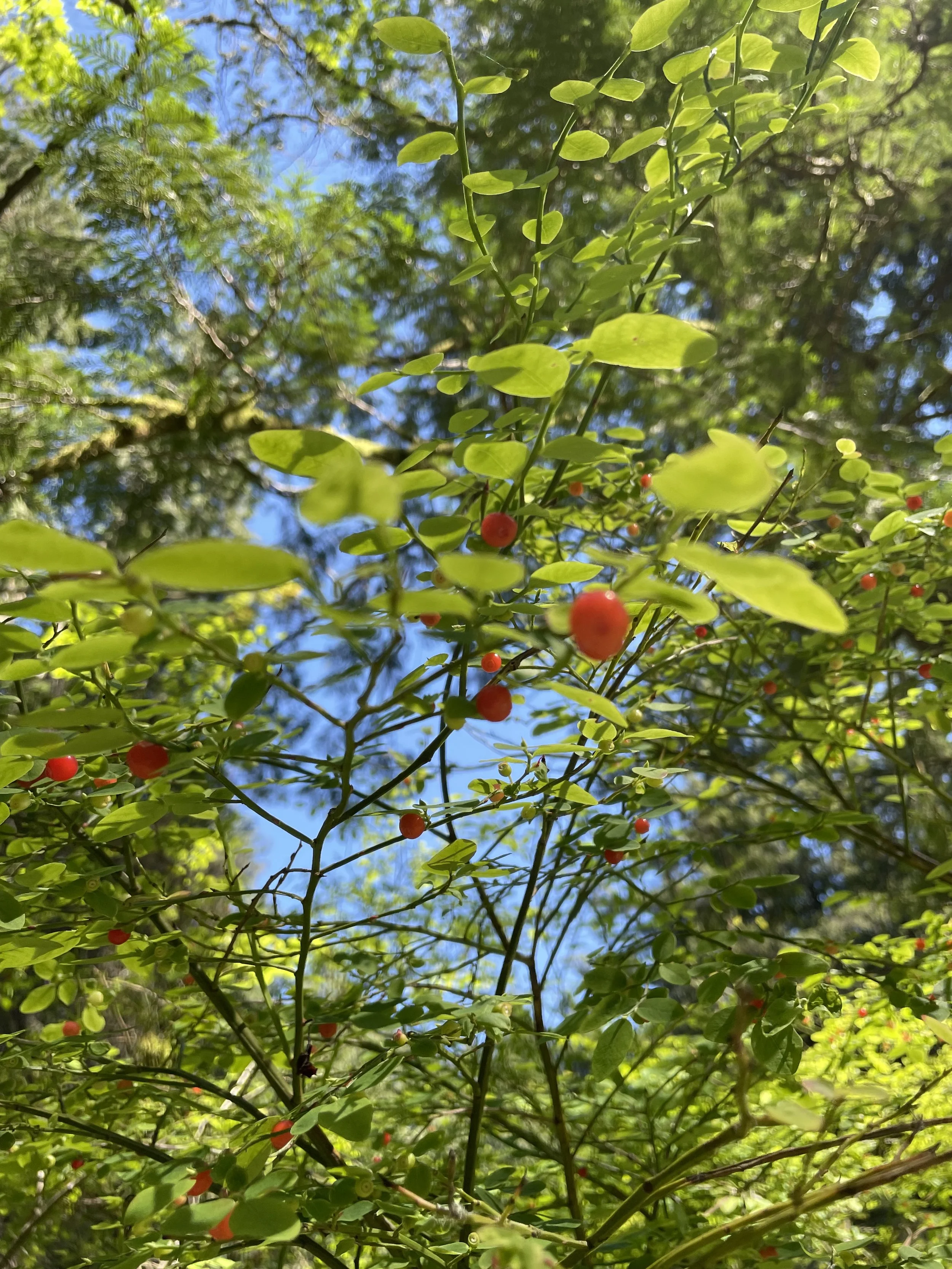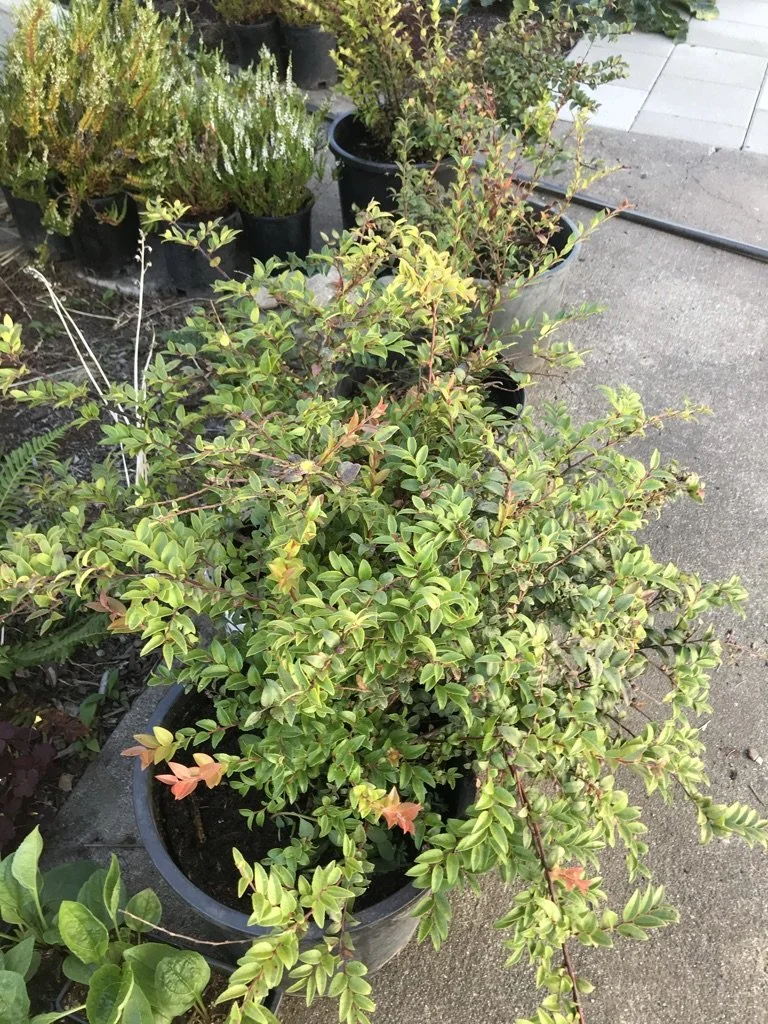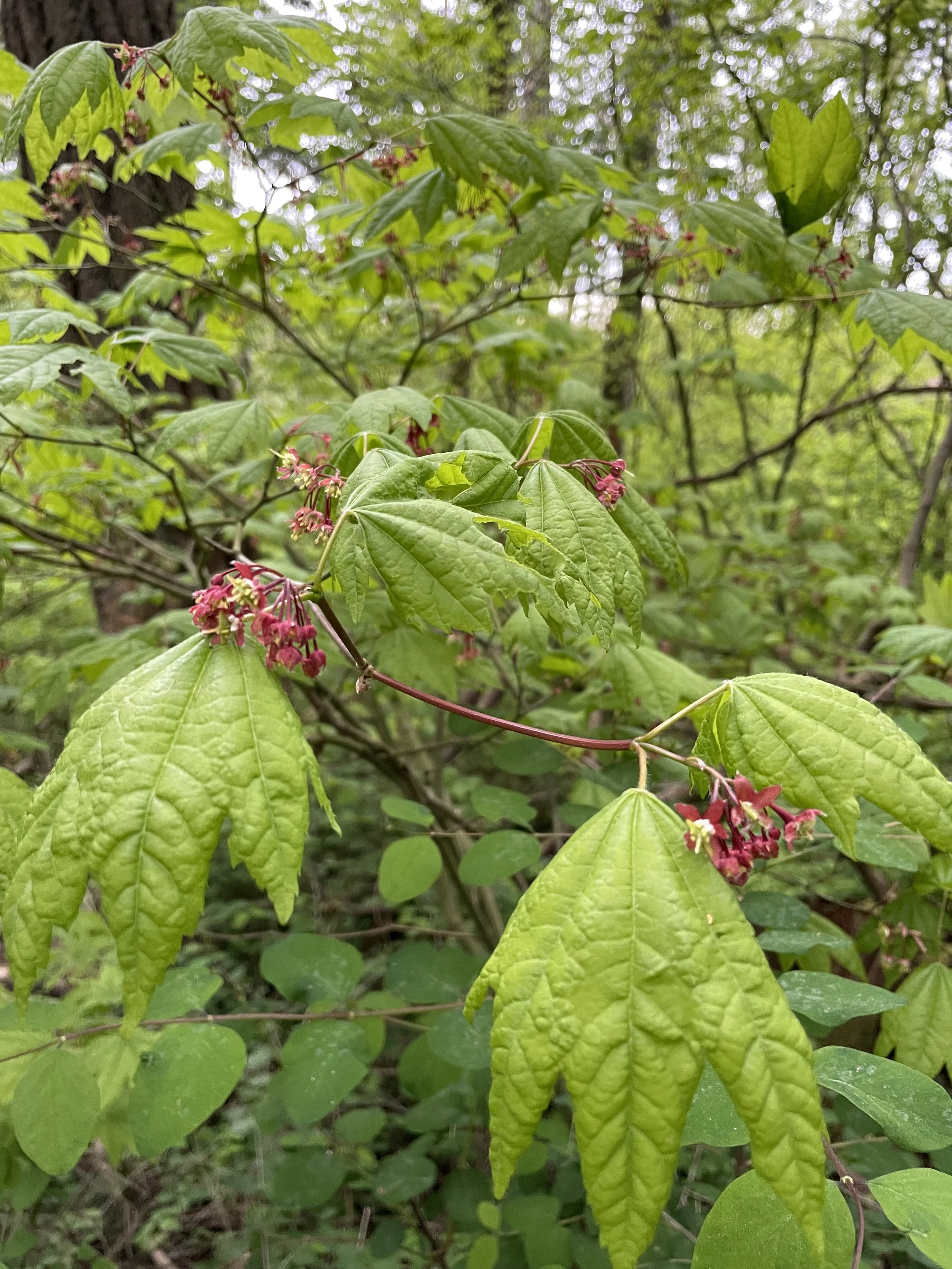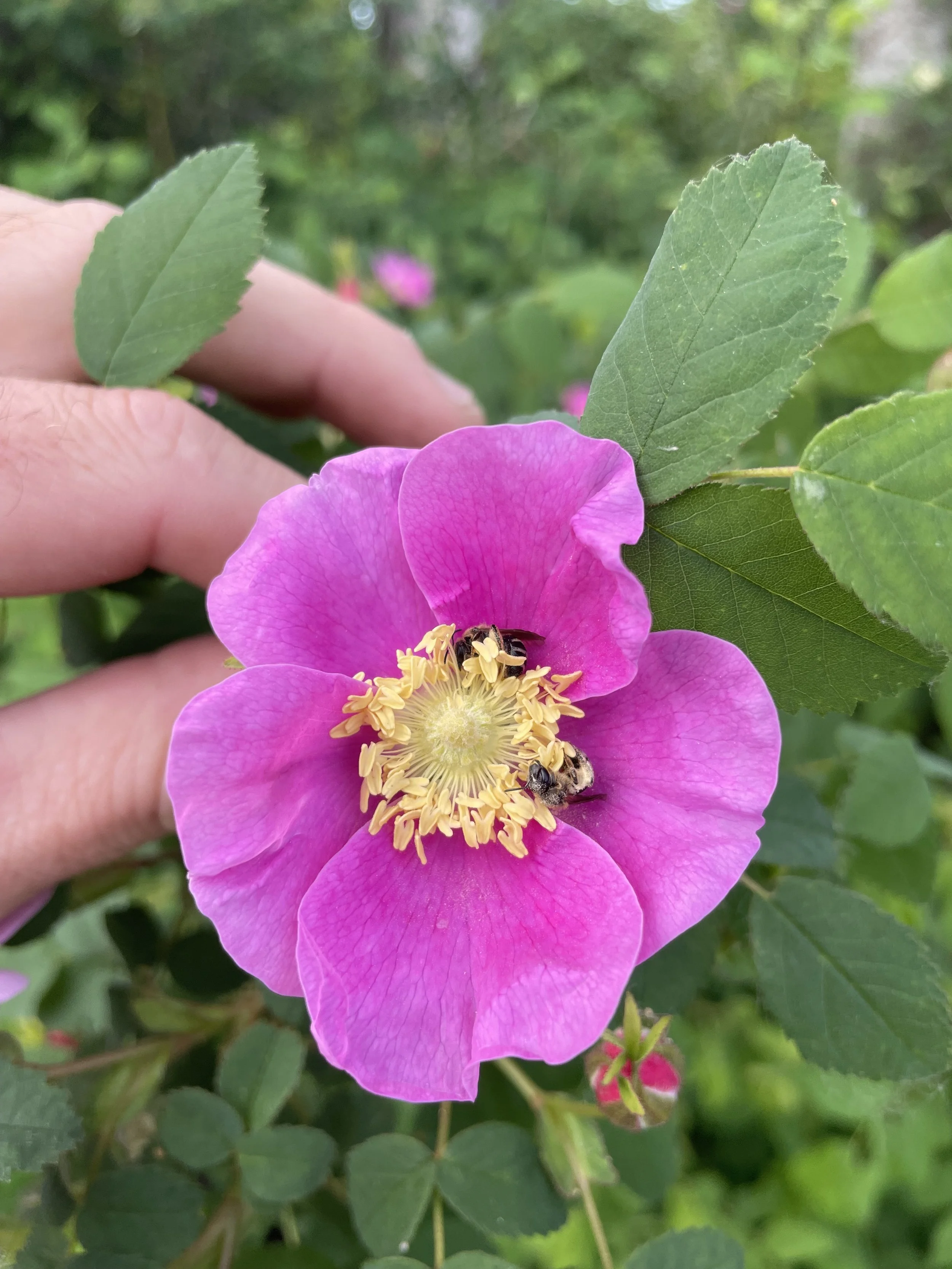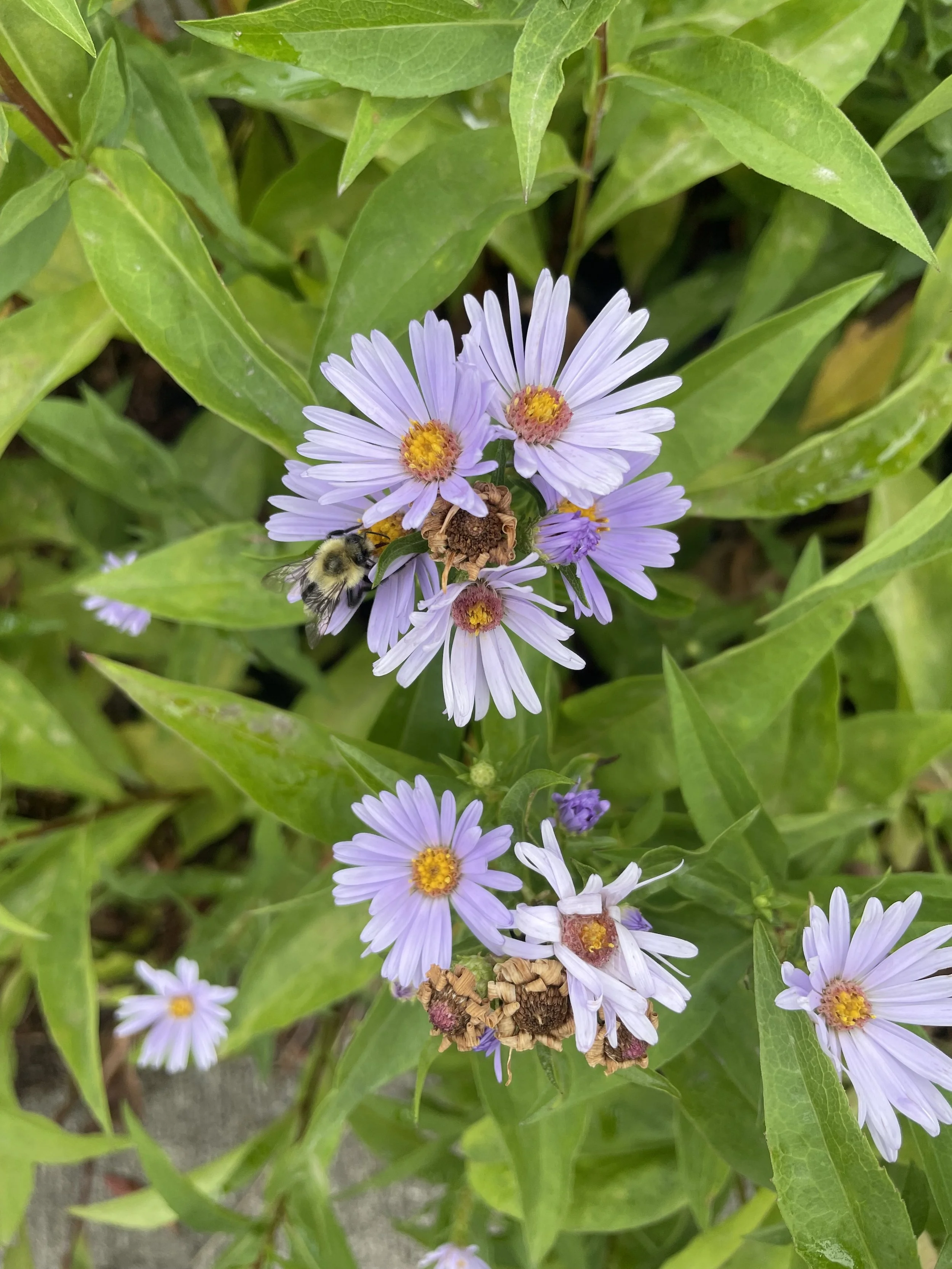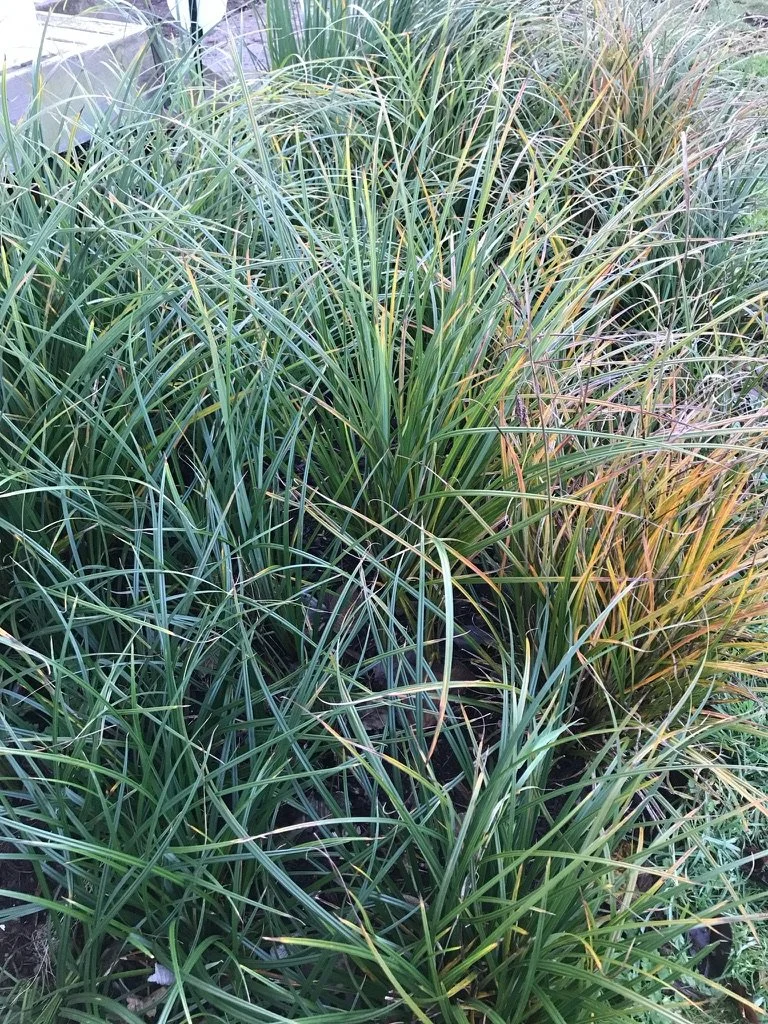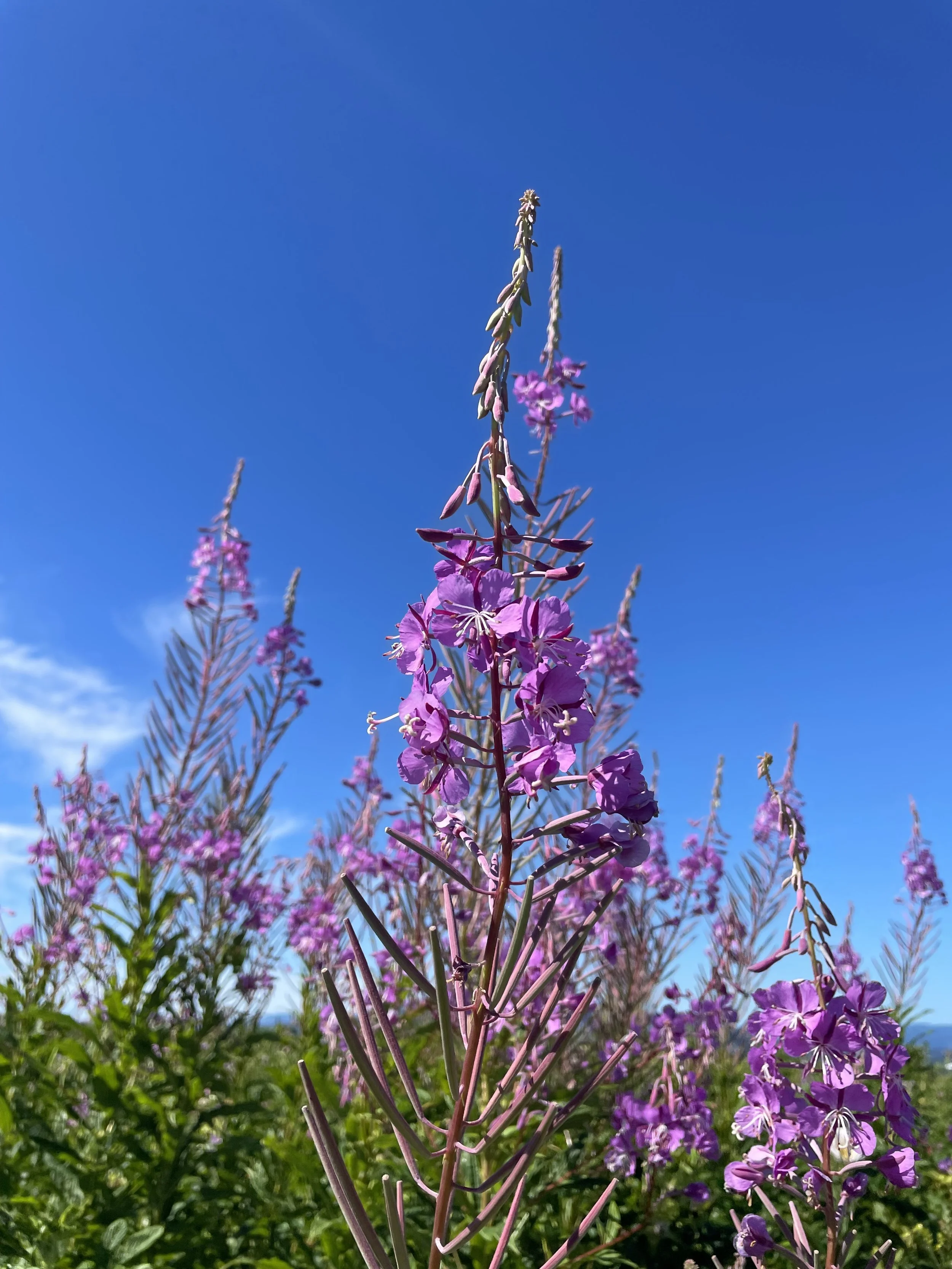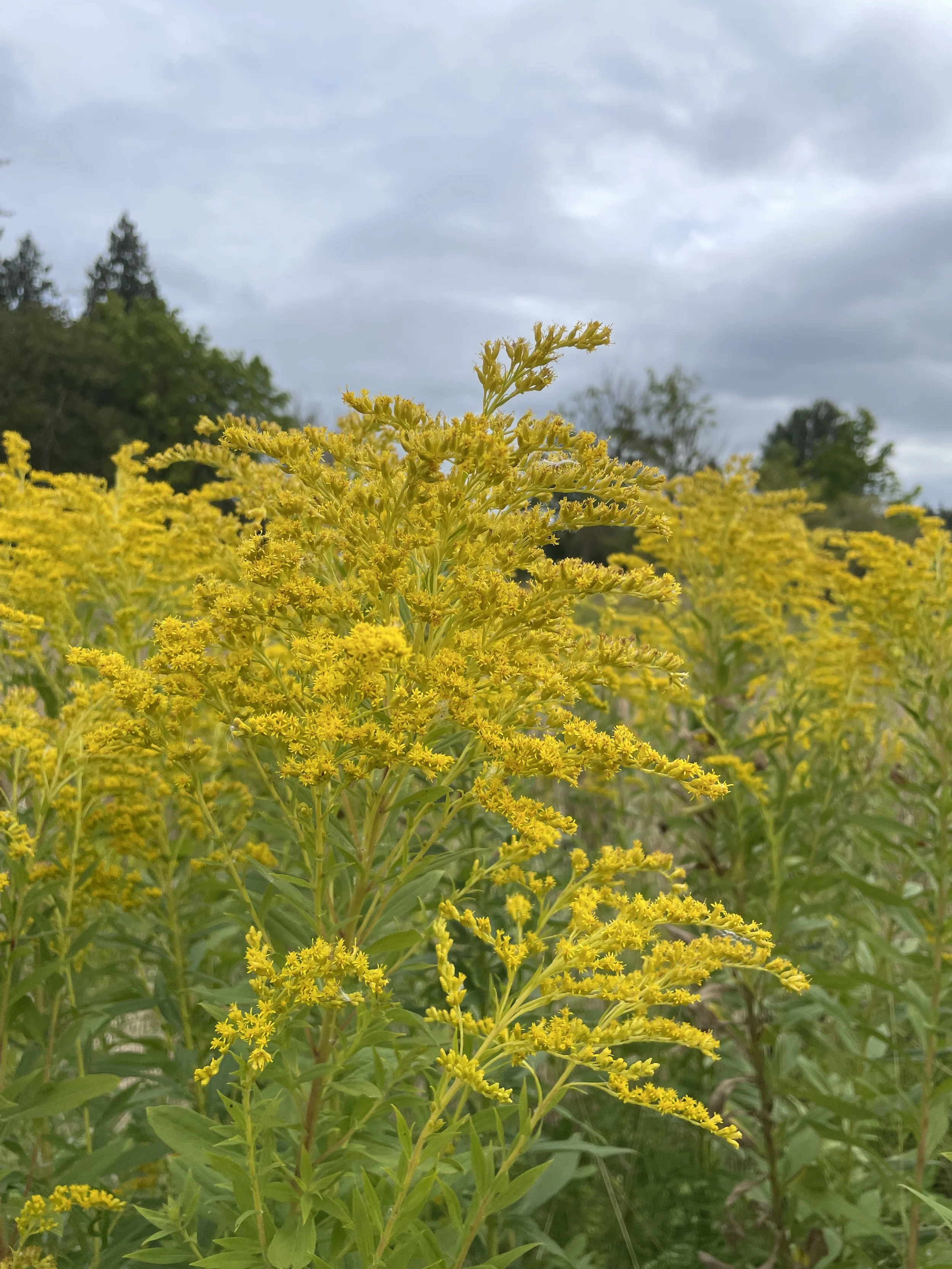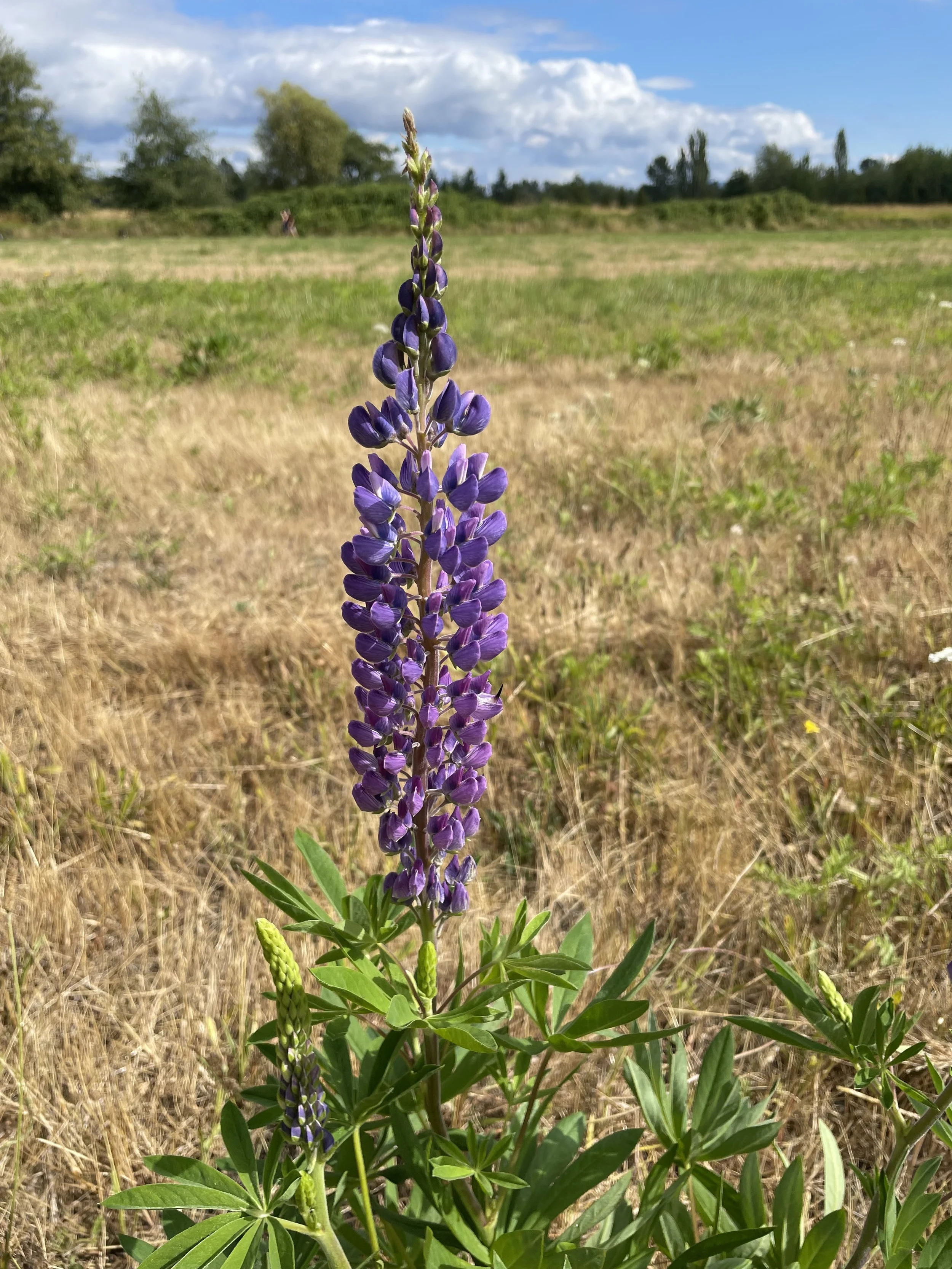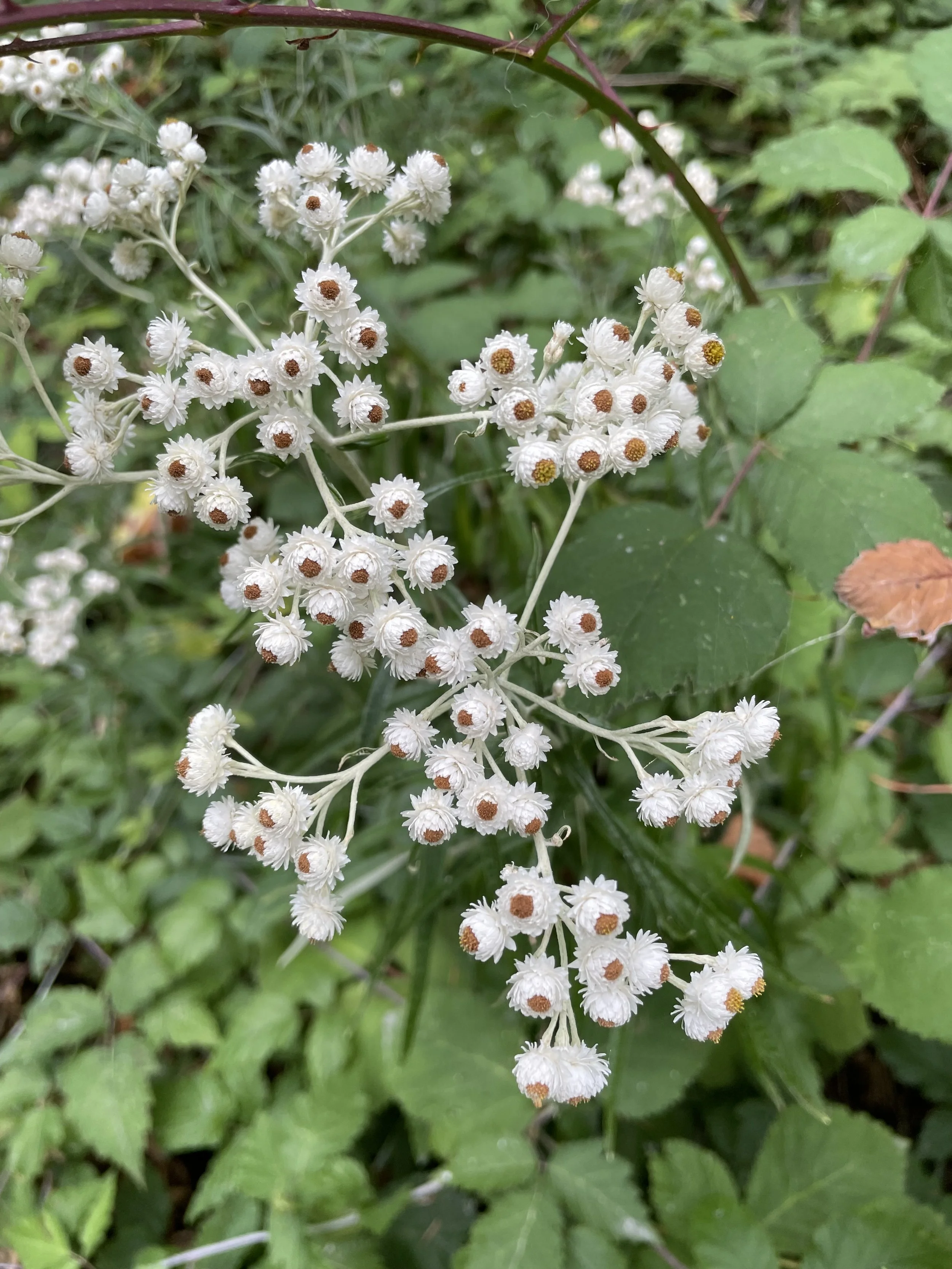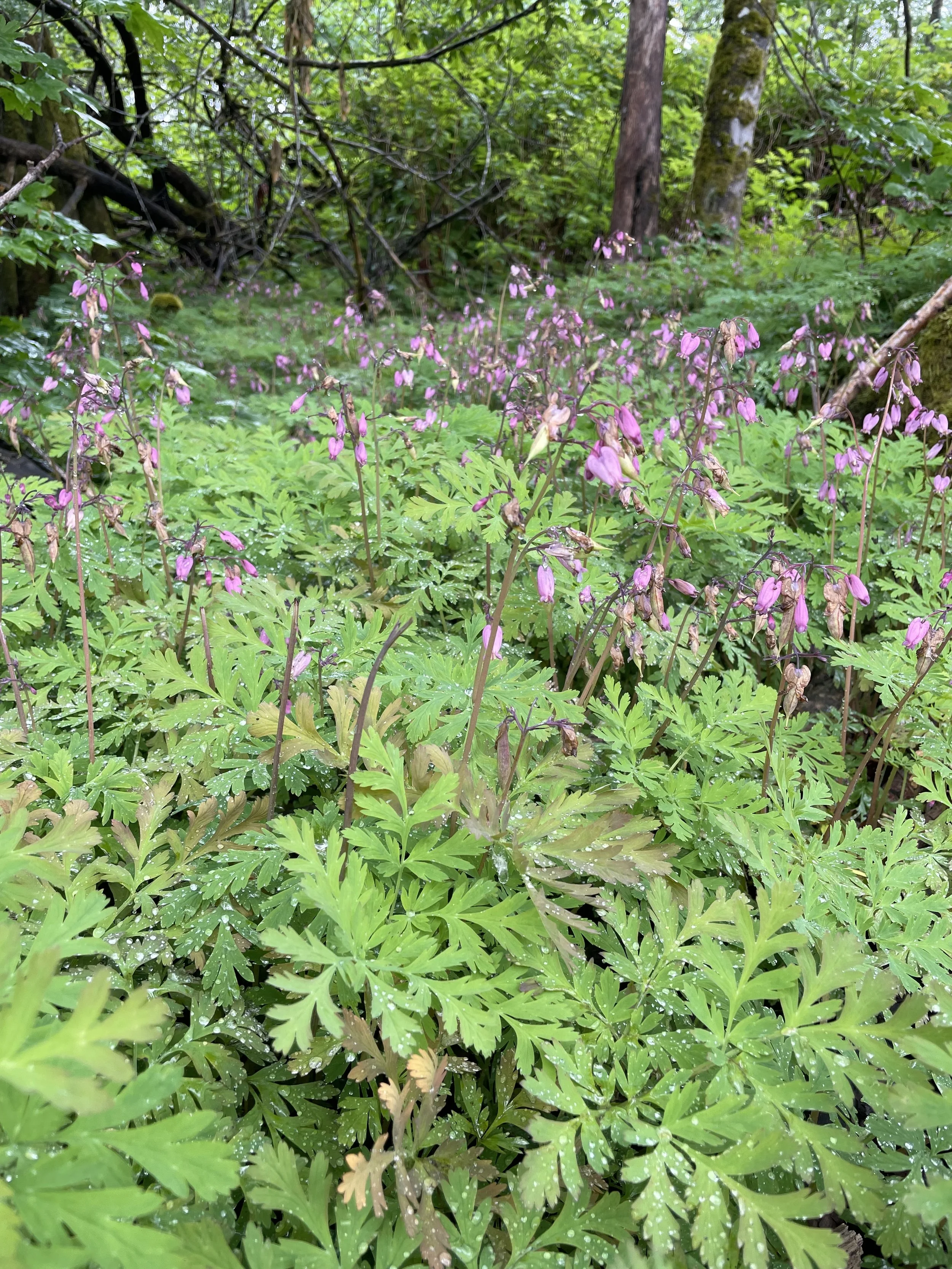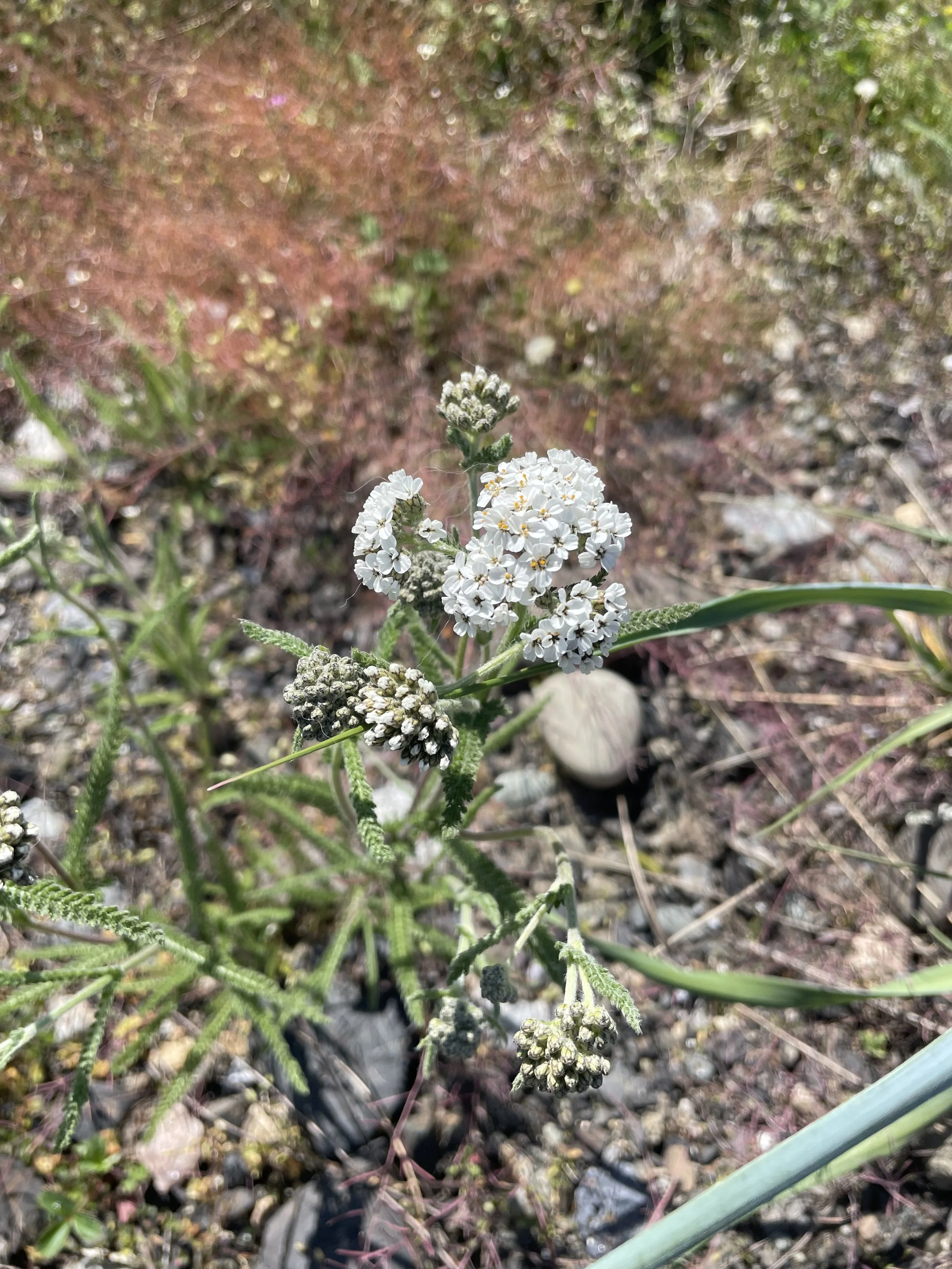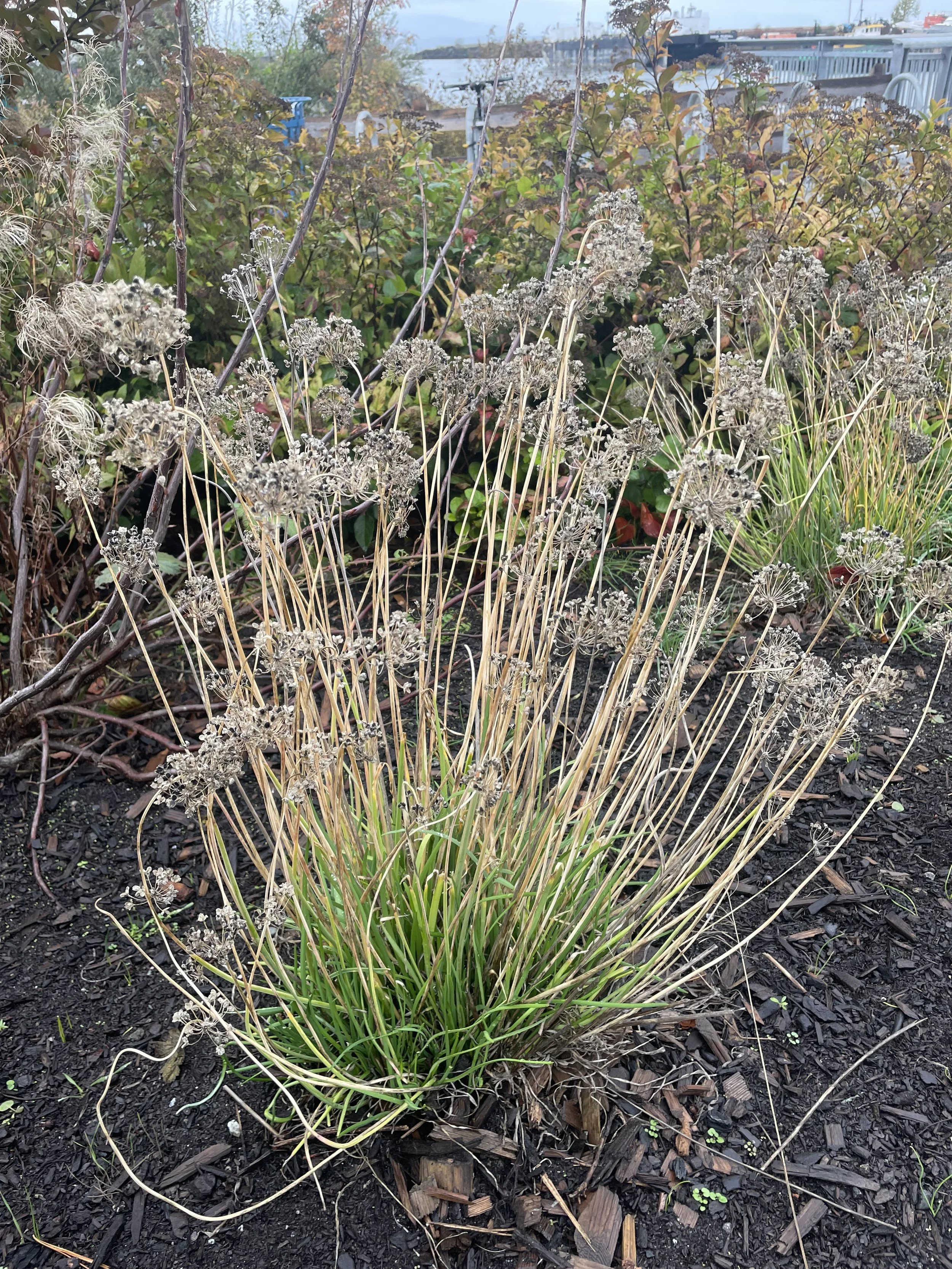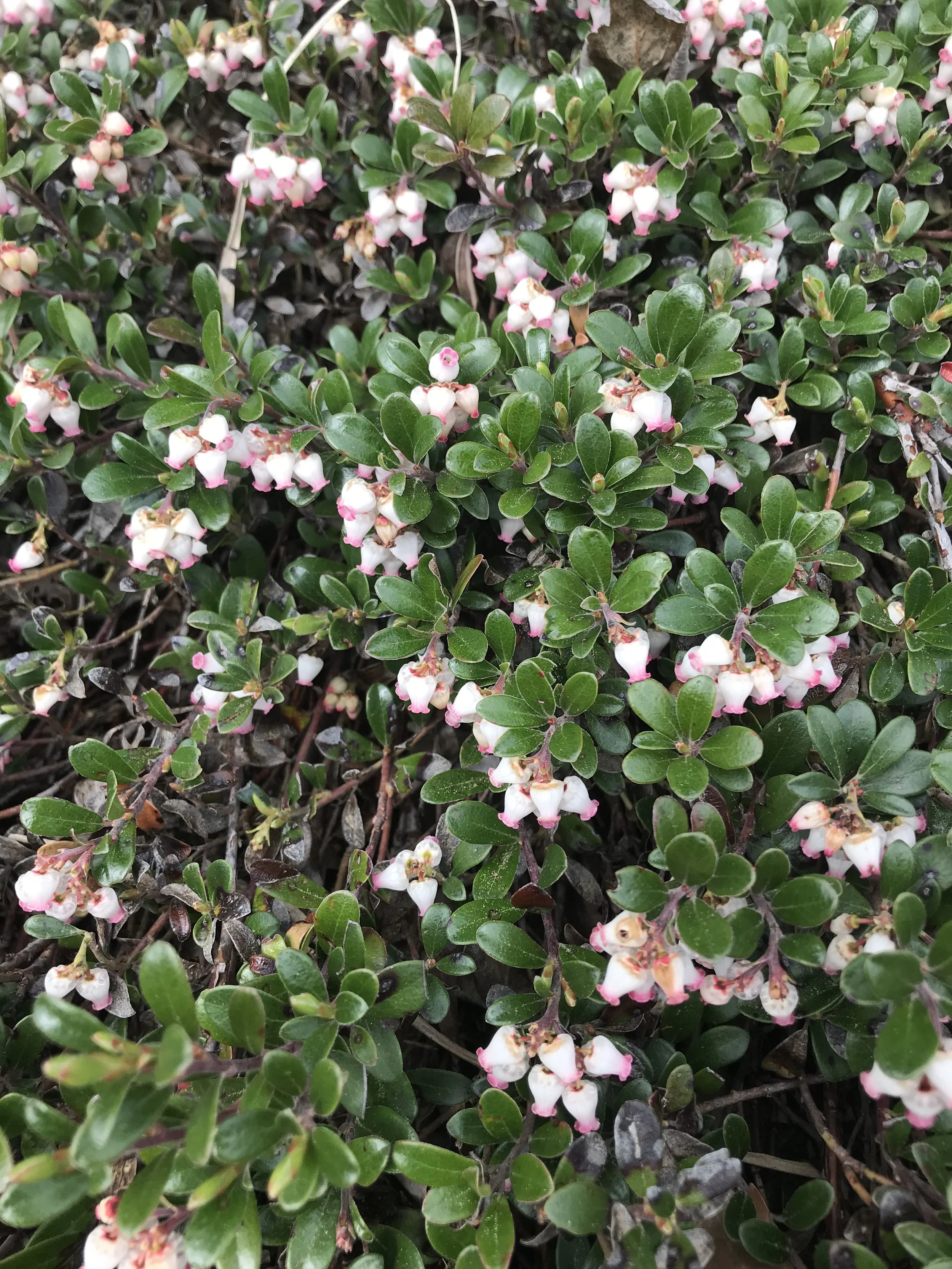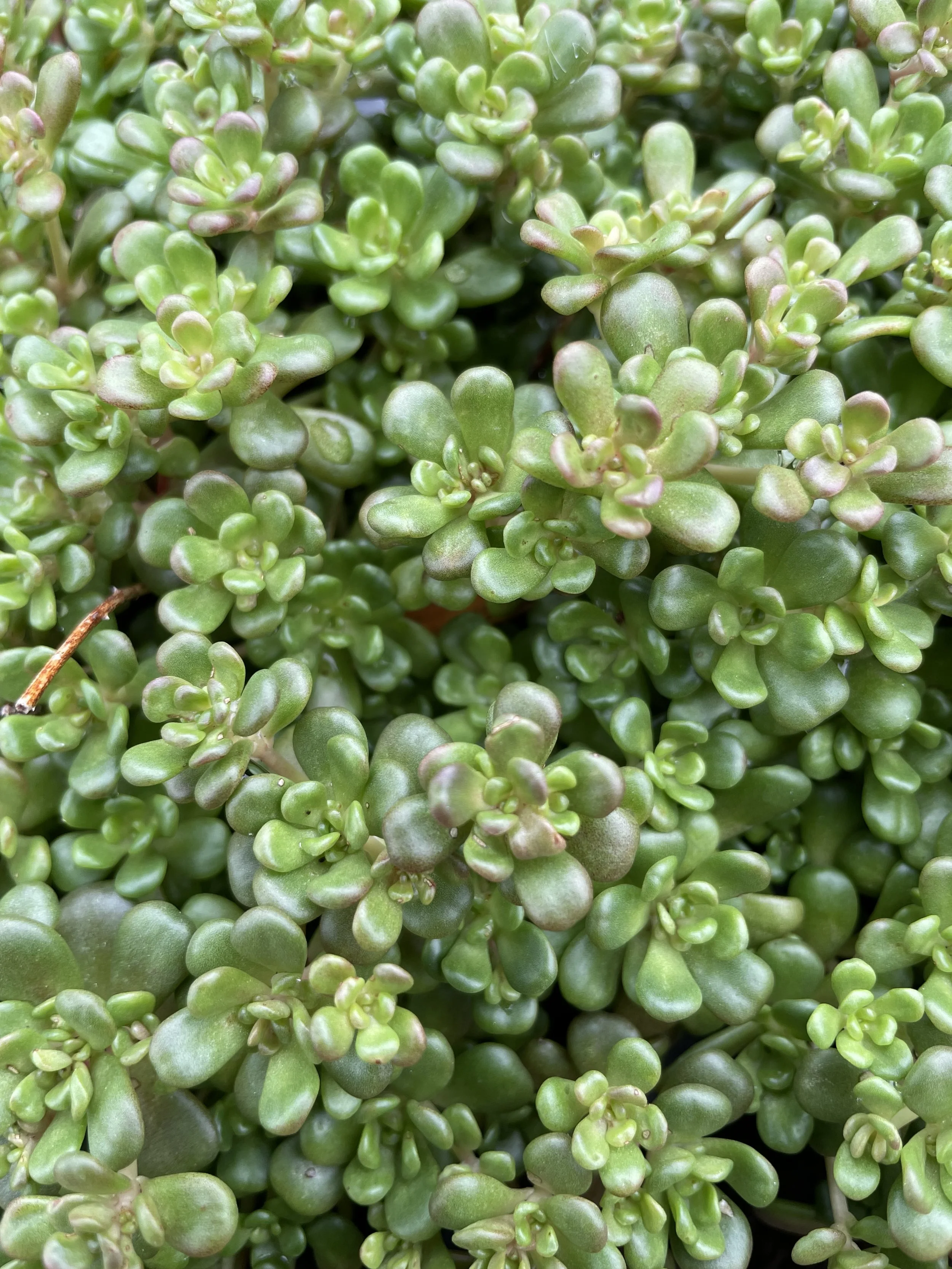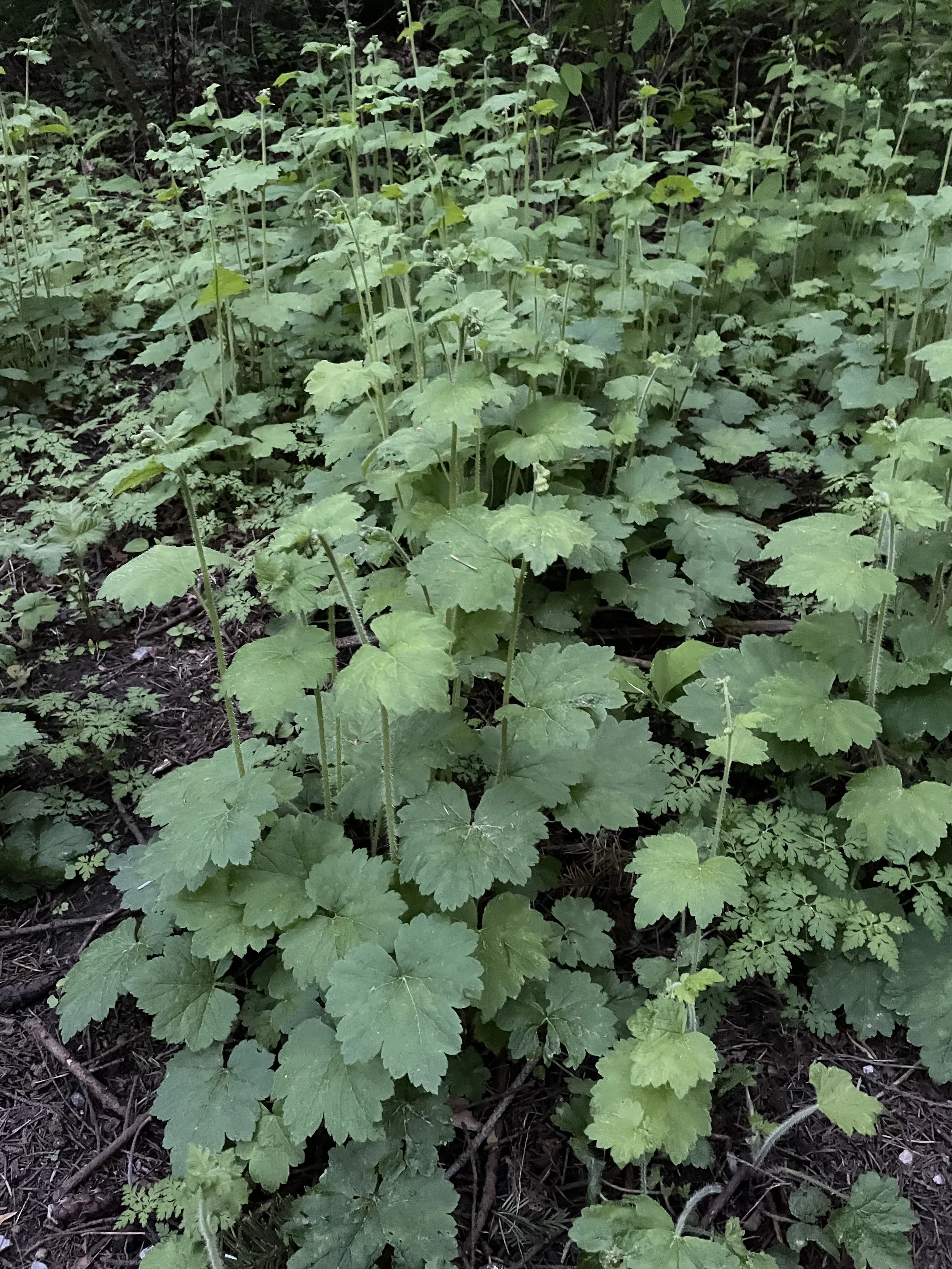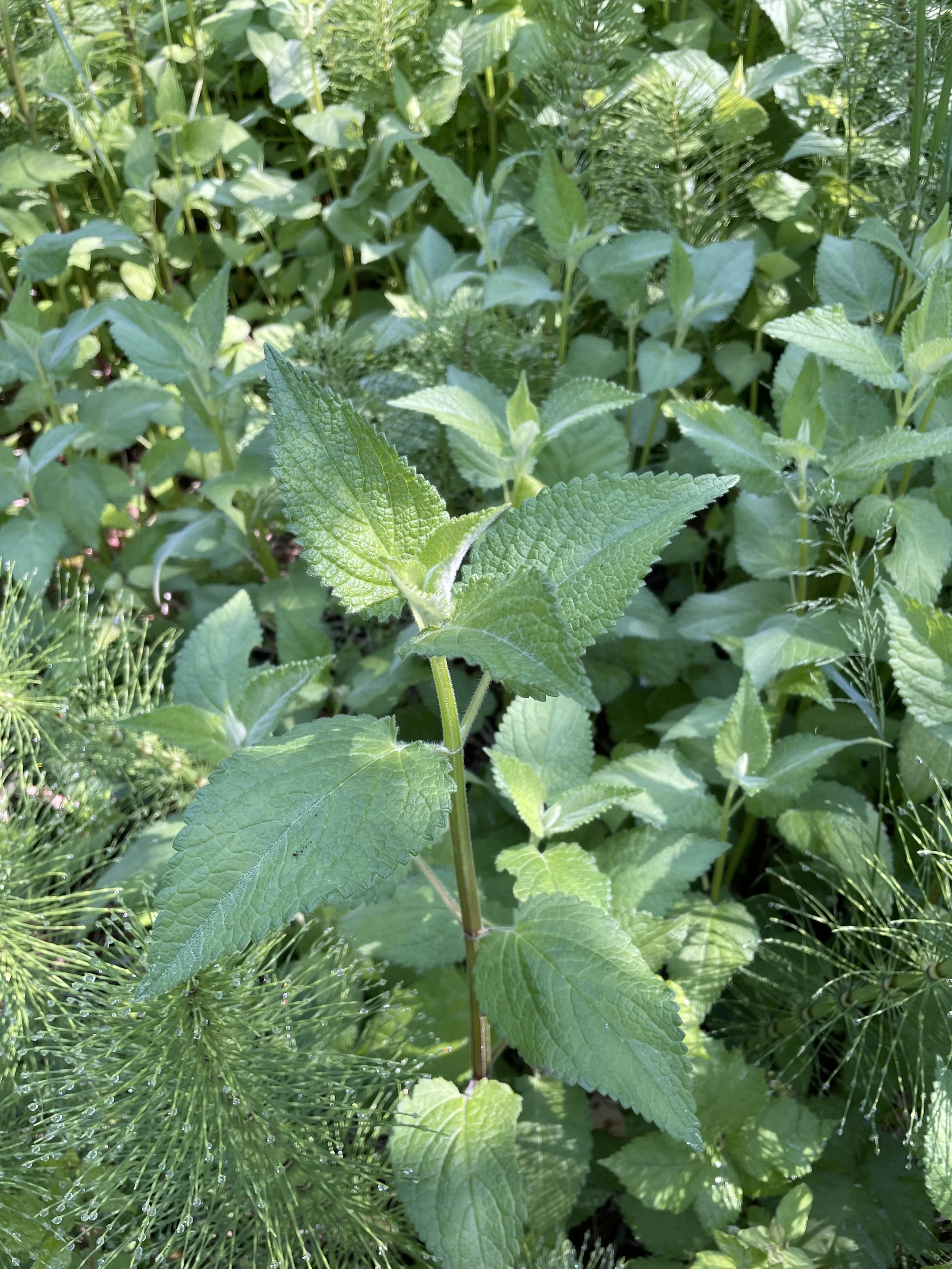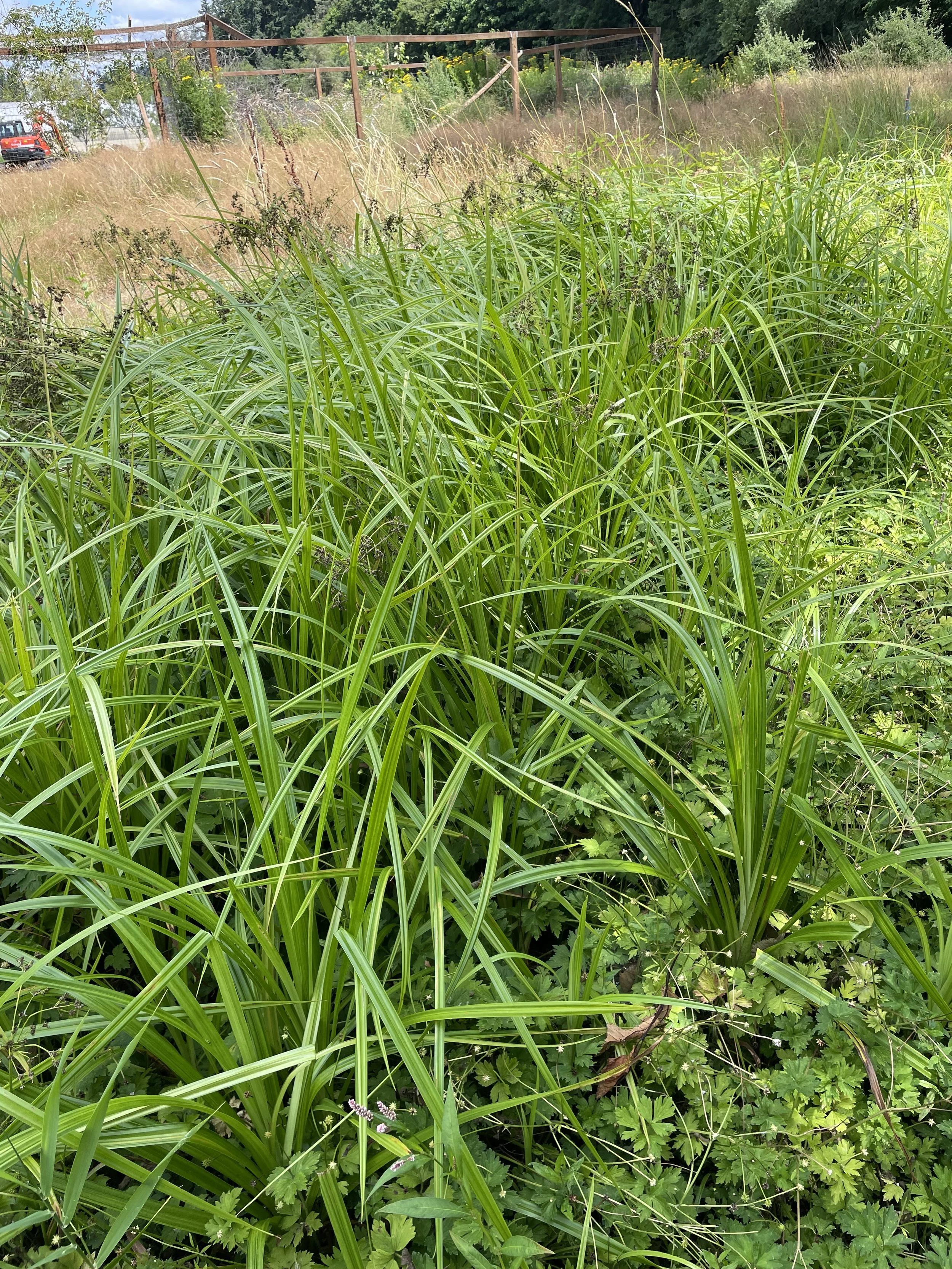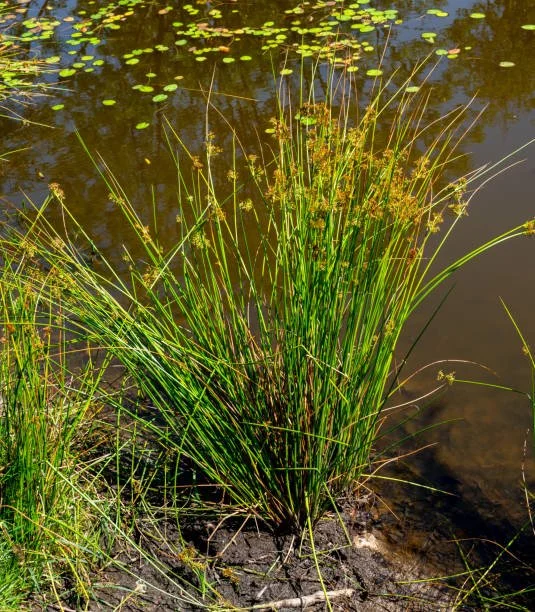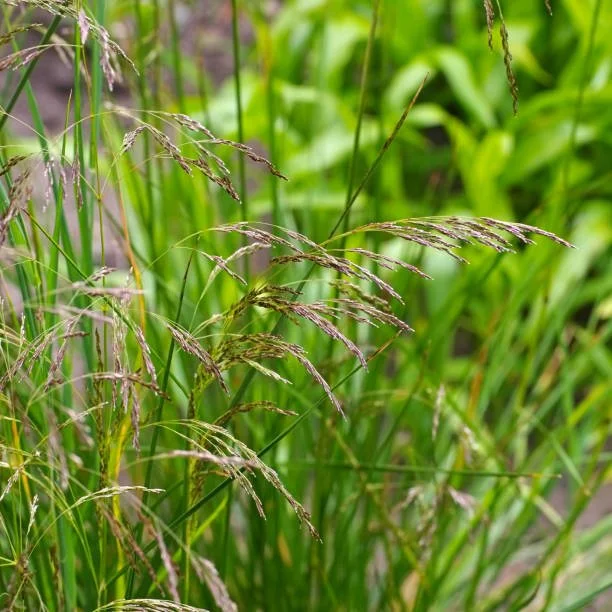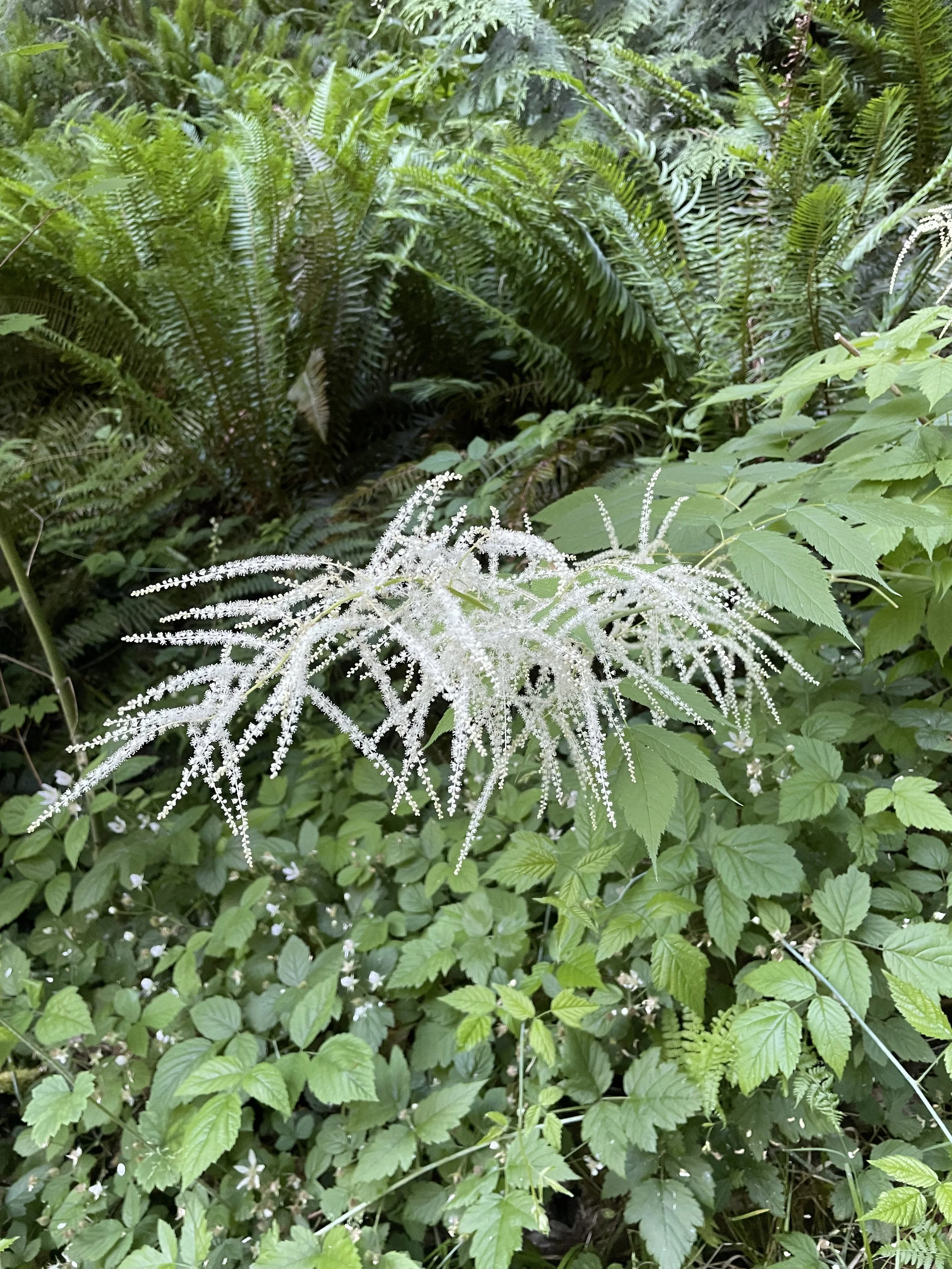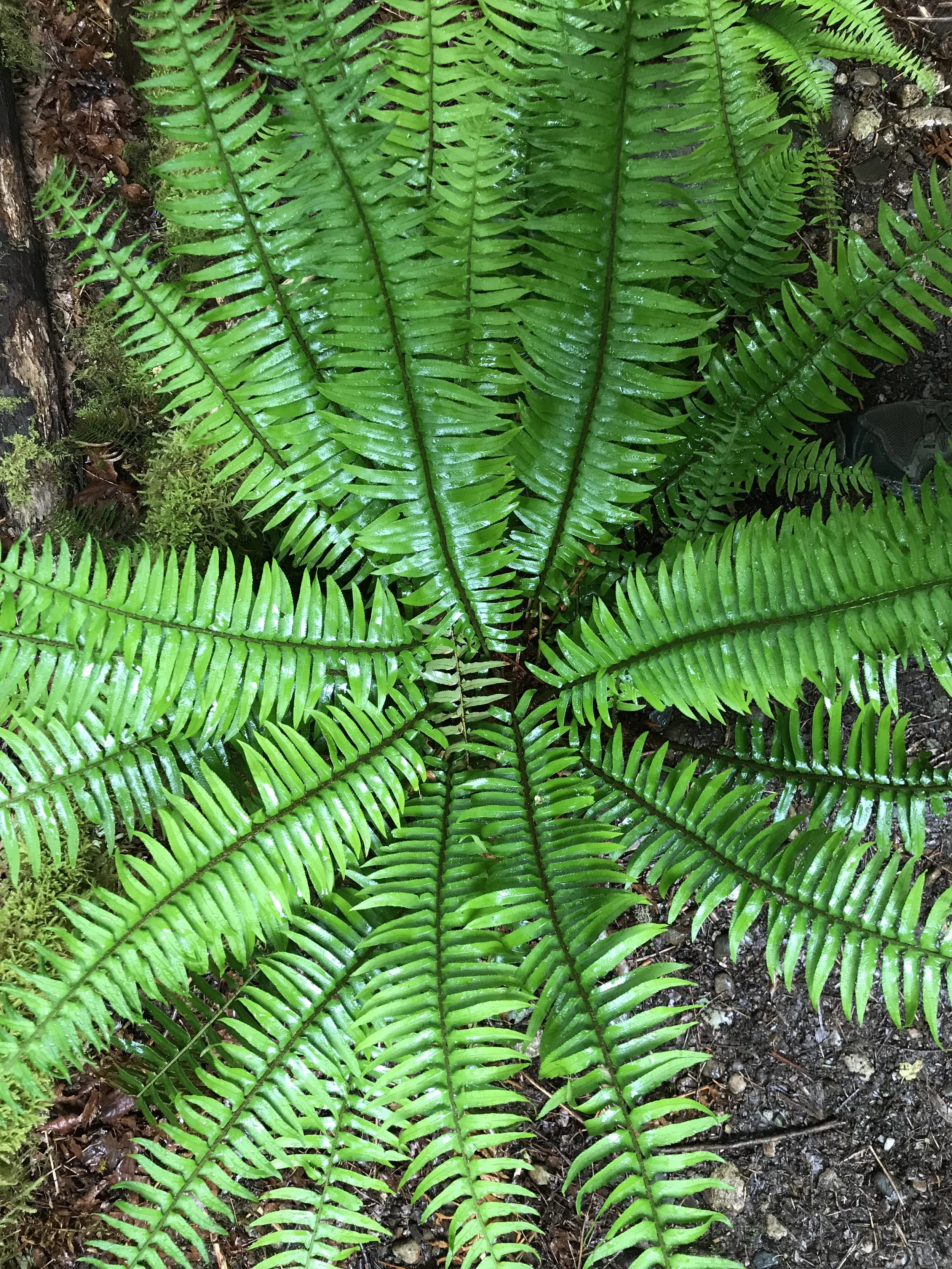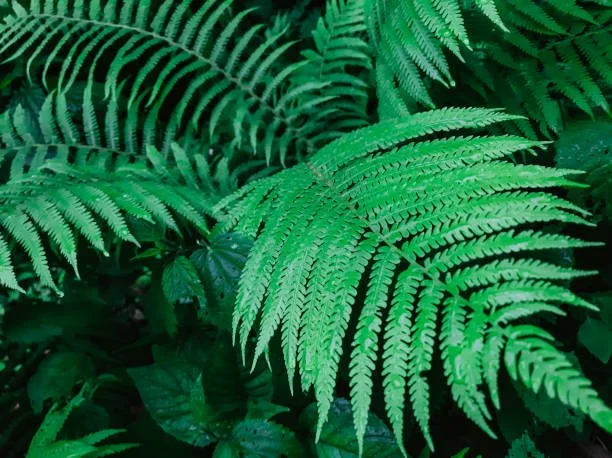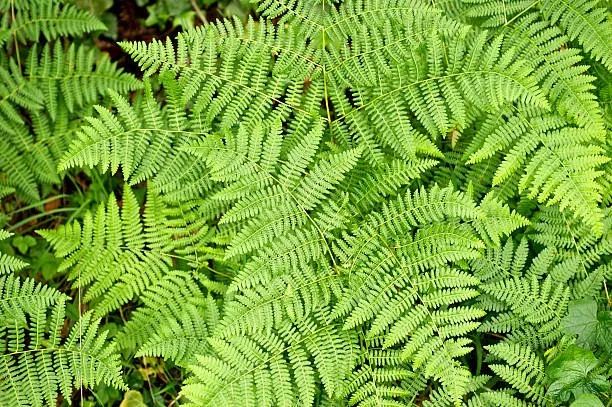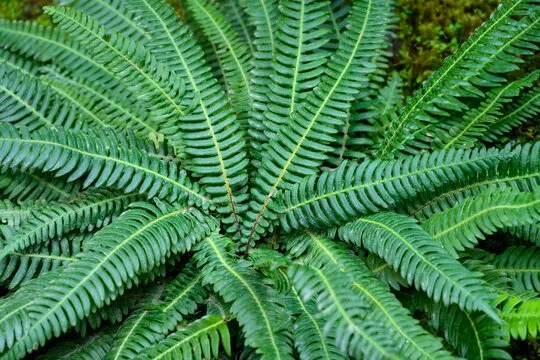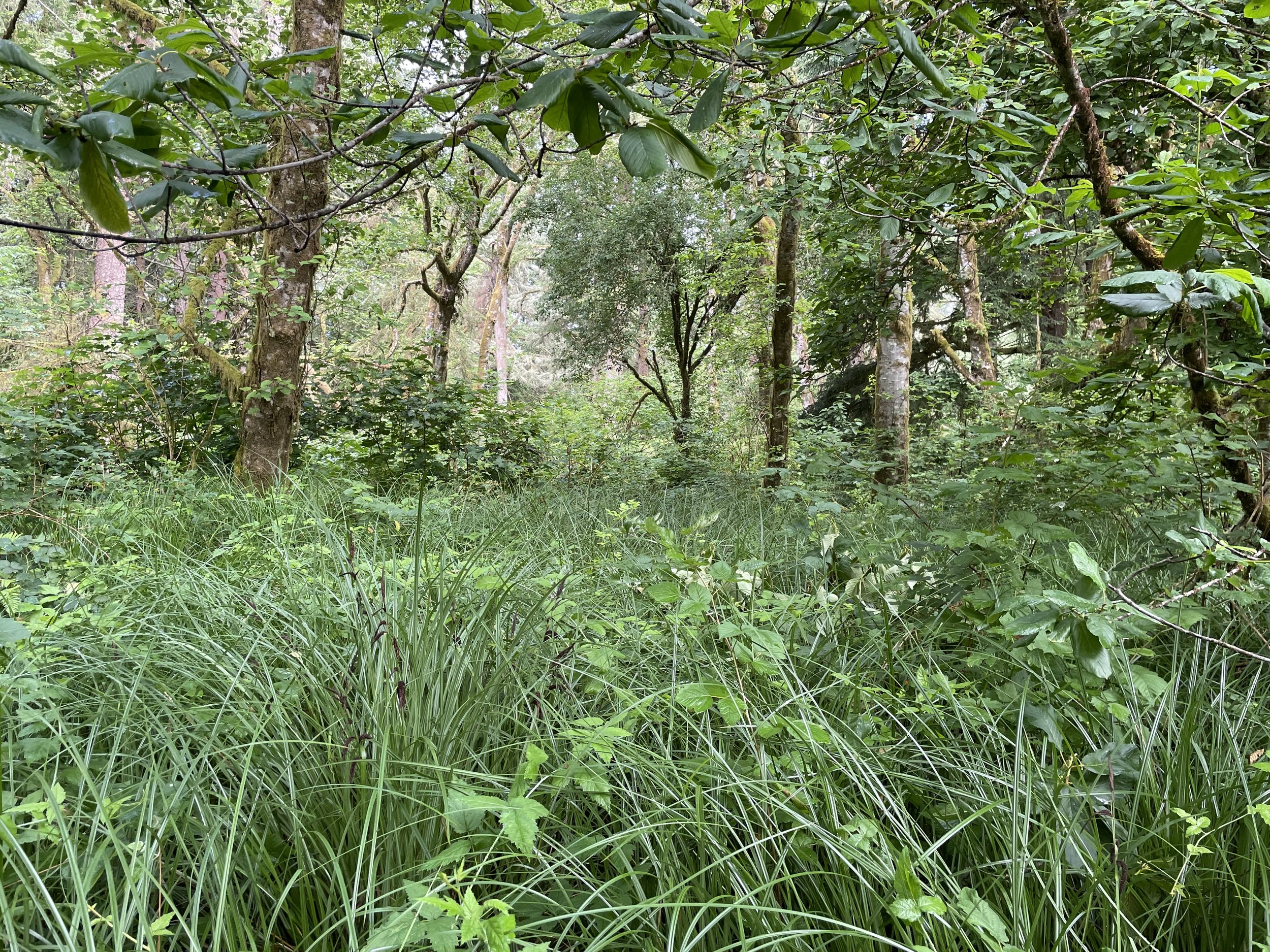
Native plants offer the best combination of seasonally inundated soils & drought adaptation, environmental resilience & dependable growth while also providing forage, shelter and connection to our wild animal neighbors.
All plants are graded as either obligate (OBL), facultative (FACW, FAC or FACU) or upland (UPL) by the US Army Corps of Engineers and recorded in the National Wetland Plant List (NWPL 2020)
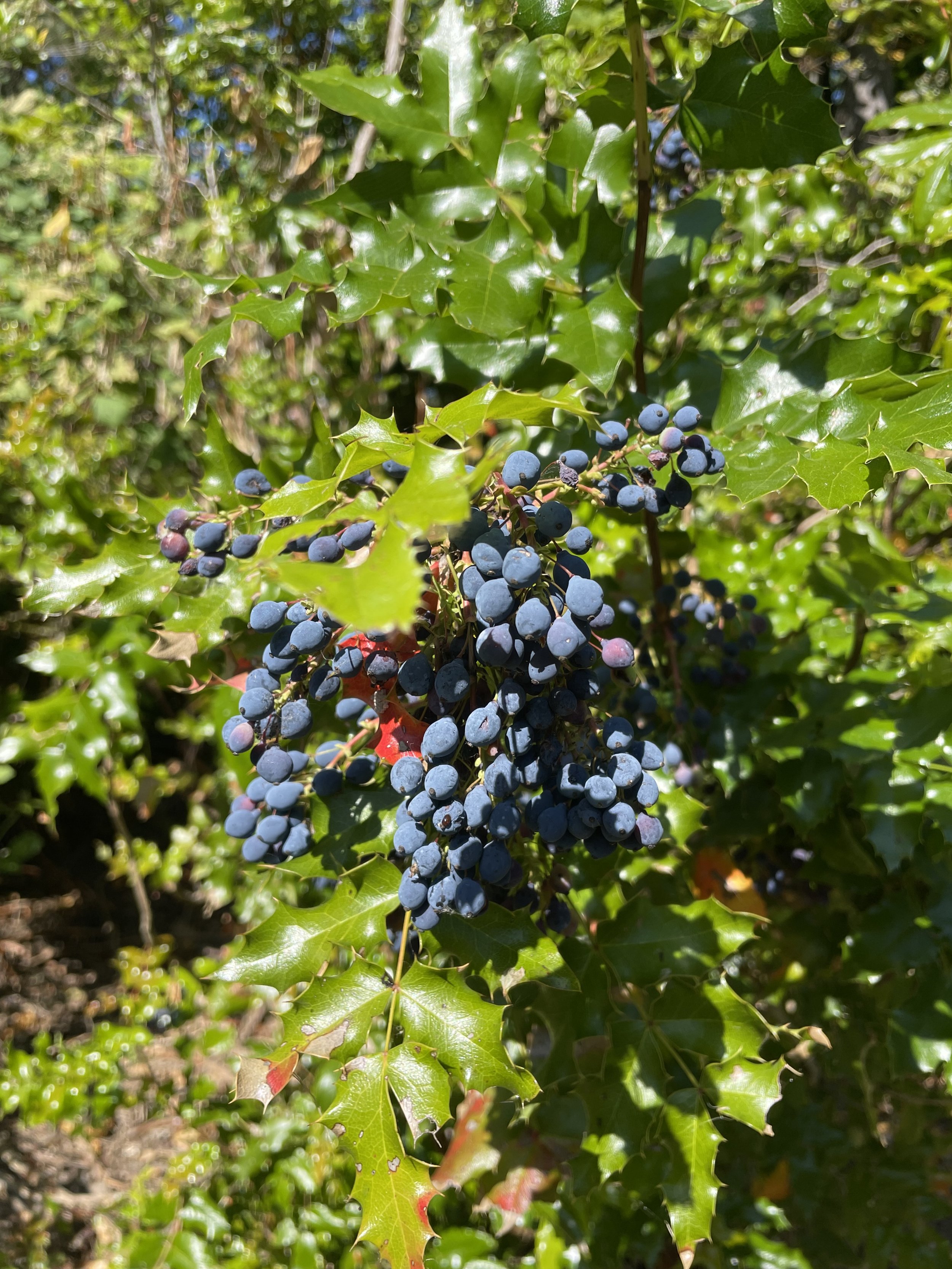
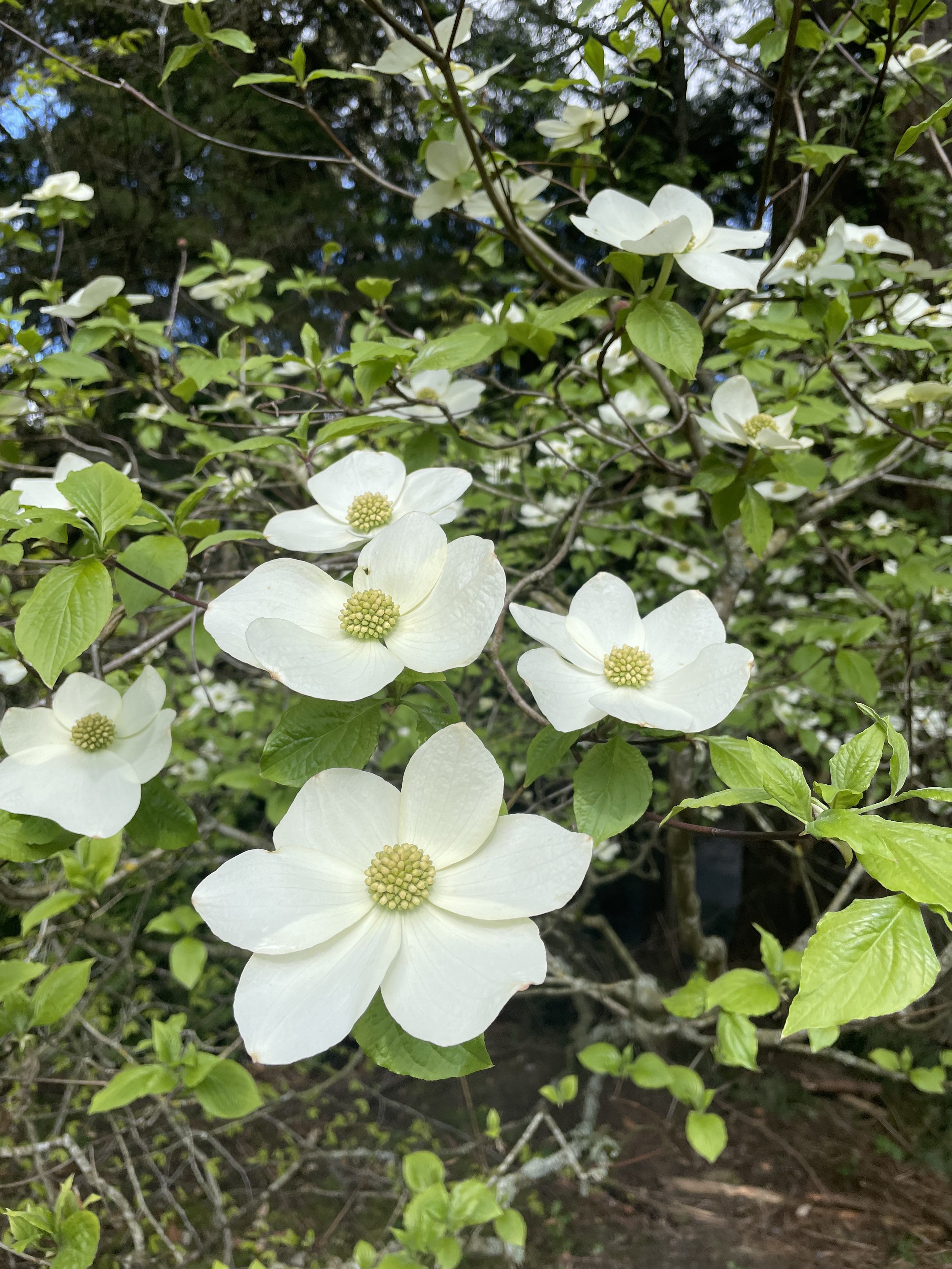
Right Plant, Right Place
Forager Landscapes can offer design and consultation services to help you find the right plants for your space as well as knowledgeable and caring plant installation and maintenance. Choosing the right combination of plants can increase real estate value, aesthetic appeal and wildlife value while decreasing irrigation needs, maintenance costs & pest/disease issues.
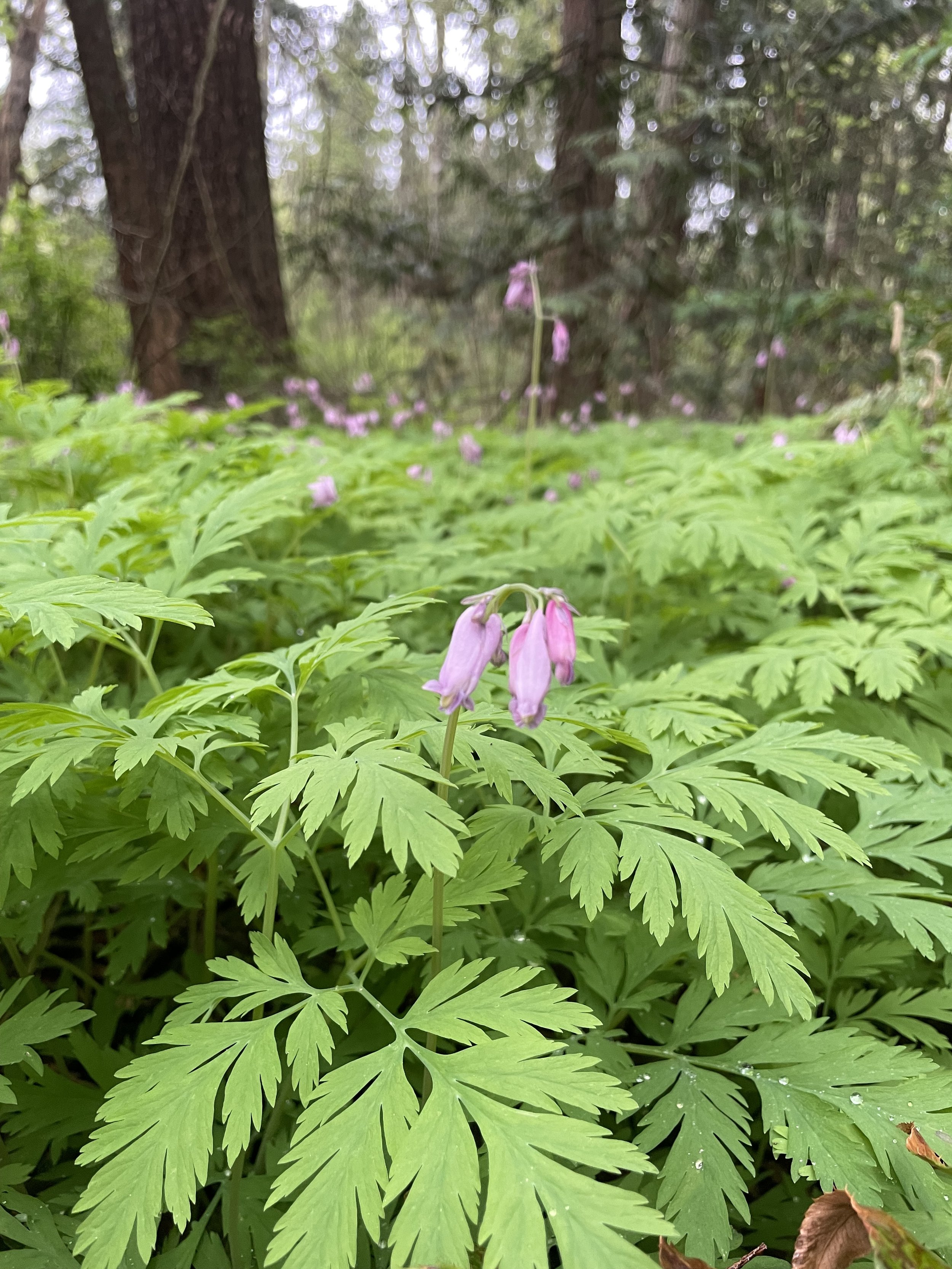
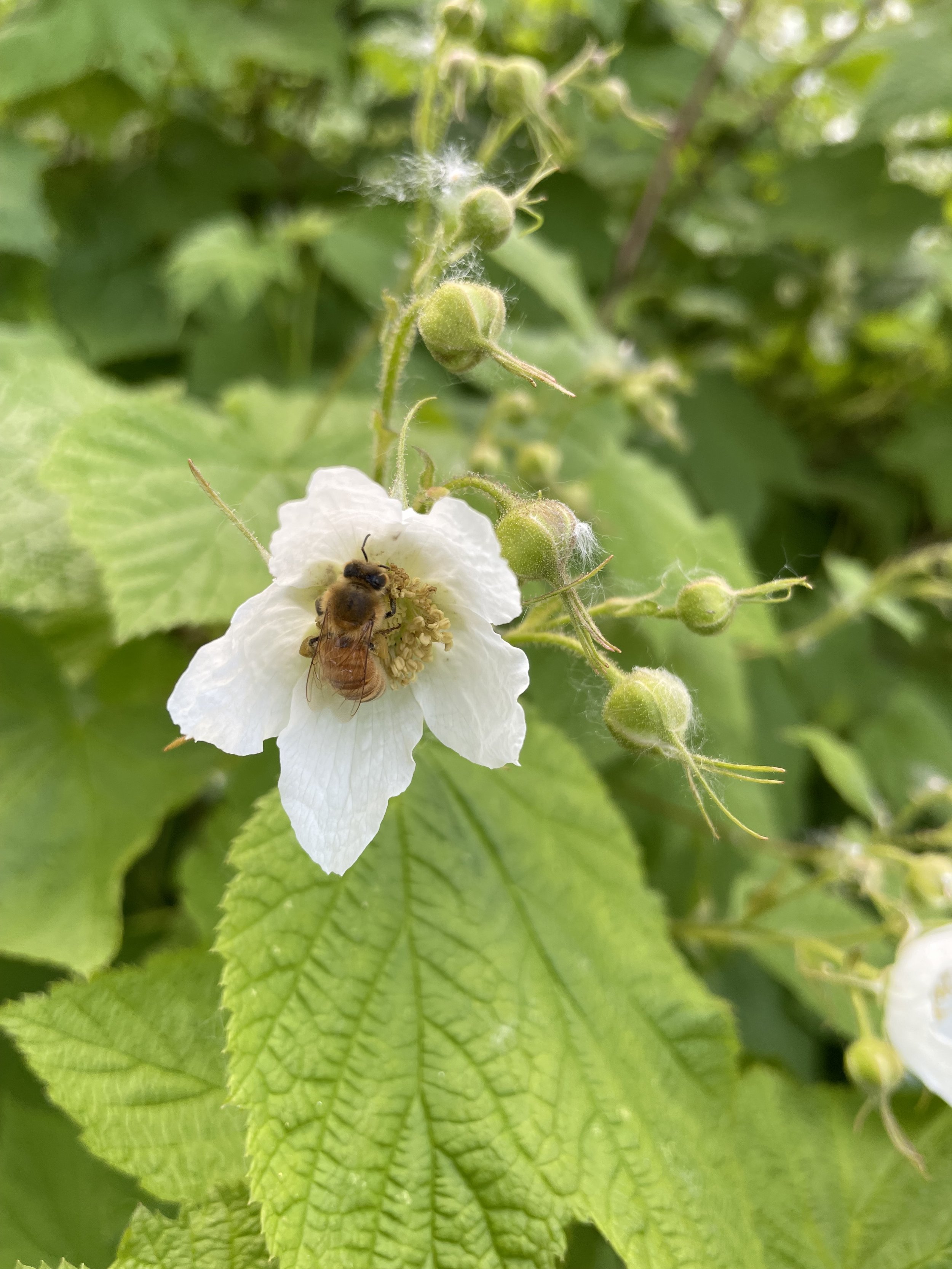
Recommended & Notable Native Trees
-
![]()
Bitter Cherry
Prunus emerginata; Scattered white flowers give way to tiny red cherries that are mostly seed. Give them a try to truly appreciate how delicious our cultivated cherries are. This is an excellent landscape tree if you are into watching birds!
Deciduous Tree
Adaptable to full sun and part shade
15-25’
Facultative Upland
-
![]()
Western Red Cedar
Thuja plicata; A very important tree historically for indigenous communities and remains an important timber tree for the construction industry, Western Red Cedar prefers to grow in moist to wet soils. WRC is a great wildlife tree, it offers excellent habitat and cover to birds and small mammals and can handle browse from deer and elk. It is shade tolerant which comes in handy when growing under other larger specimens or under Fir canopy.
Evergreen tree
Full sun to full shade
120-200’
Facultative
-
![]()
Douglas Fir
Pseudotsuga menziesii; Doug Firs grow into mammoth towering trees that can reach 300’ and live approximately 1300 years. They have thick, grooved bark that can withstand fires. If Western Red Cedar is the lowland giant that enjoys wet soils, Douglas Fir is the upland giant. Although it is sometimes found in wetlands, it loves the high and dry sites. This is another staple for wildlife. The tree is excellent hunting habitat for larger predators and the seeds are consumed by small birds and squirrels.
Evergreen tree
Full sun to part shade
200-300’
Facultative Upland
-
![]()
Cascara
Frangula purshiana; Cascara is often confused with Alder and, similar to Alder, it often blends into the damp woodland background that it is commonly found. I like it for its ability to work on many different sites but it is reported to not do well in an urban setting. Its an attractive tree in all seasons and the dark blue-purple berries get gobbled up by birds and squirrels. If you have a woodland garden, this is an excellent choice.
Deciduous Tree
Adaptable to sun and dappled shade
12-30’
Facultative
-
![]()
Bigleaf Maple
Acer macrophyllum; A wonderful shade tree, Bigleaf Maple’s are large and spreading trees that grow fast and have remarkable fall color. the more shaded Bigleaf Maples can have mosses and licorice ferns growing on them to make them even more eye-catching. This tree loves to grow near water but not in water.
Deciduous tree
Full sun to part shade
Facultative Upland
70-100’
-
![]()
Quaking Aspen
Populus tremuloides; named for the way the leaves seem to vibrate or quake in the wind, Quaking Aspens grow fast and stay narrow individually but are often found growing in large stands that are genetically identical. This tree will establish and revegetate wet meadows and sunny mixed woodlands. This is a fun landscape plant that can break up the stillness if your garden has the space and soil moisture to accomodate. Like Black Cottonwood and others in the poplar family, this tree grows fast, has a short lifespan, is an excellent resource for wildlife and then decomposes quickly, making it an excellent early successional species.
Decdiuous tree
Full sun
30-60’
Facultative Upland
-
![]()
Sitka Alder
Alnus viridis ssp. sinuata; A common inconspicuous tree found in Western Washington, Sitka Alder repopulates disturbed sites readily and grows quickly. It is a recommended species for restoration projects due to its adaptabilty and its nitrogen fixing abilities which help plants around it grow. There is a joke that you don’t need to add Alder to your restoration planting plan, because the tree will naturally repopulate your site anyways. It is very similar to Red Alder and has overlapping territory but Sitka is generally the more available species from wholesale and retail native plant nurseries.
Deciduous tree
Full sun to part shade
5-20’
Facultative Wetland
-
![]()
Paper Birch
Betula papyrifera; Named for the way the white bark peels thinly off the tree like paper. Paper birch’s distinctive look can make it an attractive addition to the landscape but be careful not to plant it near driveways, roads or patios because it can leave a sticky residue called “honeydew” on surfaces that are difficult and annoying to clean off. Plant in a hedge as a backdrop to extend the forest edge!
Deciduous Tree
Full sun
40-90’
Facultative
-
![]()
Gary Oak
Quercus garryana; Our only native oak, Gary is a slow to establish tap rooting white oak that is wonderful for wildlife. Most Oaks have on-years called masting and off-years where they don’t produce any acorns. However Garry Oak is a dependable every year acorn producer. They can live up to 500 years.
Deciduous Tree
Full sun
80-100’
Facultative Upland
-
![]()
Pacific Dogwood
Cornus nuttallii; A common gateway plant into the world of natives. This is an excellent choice for the residential landscape. Its moderate size, beautiful blooms and showy red berries make it easy to incorporate and work as a specimen tree. Naturally it is found as an mid level understory plant to Fir forests that does best in dappled shade. It can suffer from a disease called Dogwood Anthracnose (there are disease resistant varieties available) that can be a bit ugly but is manageable by maintaining healthy orchard practices.
Deciduous tree
Part sun part shade
20-30’
Facultative Upland
-
![]()
Oregon Ash
Fraxinus latifolia; What’s your opinion on native vs. naturalized? This is an ongoing conversation about Oregon Ash. Although it qualifies as a native to the region, it is not found in Northwest Washington naturally. Some jurisdictions do not allow it to be included in restoration planting plans. It grows quickly in wet soils near streams, creeks and flood plains. This tree’s leaves are reported to be consumed by the larvae of butterflies.
Deciduous tree
Full sun
50-75’
Facultative Wetland
-
![]()
Shore Pine
Pinus contorta; One of my favorite native plants. It is highly adaptable and can be found on high and dry exposed salt sprayed cliffs and is equally likely to occur in wetlands. It might be the most beneficial wildlife species that you can plant in the Pacific Northwest. The whole plant is used by birds, small mammals and rodents while being resilient to the browse, and it provides excellent roosting and nesting. This could be an excellent hedge plant if given the proper width.
Evergreen shrub/tree
Full sun
20-40’
Facultative
-
![]()
Black Cottonwood
Populus balsamifera; Black Cottonwood, also known as Balsam Poplar is an excellent soil builder and restoration site powerhouse tree. It self seeds readily, it can be propagated via live stakes well and it grows fast and gets above the invasive species to effectively shade them out. It also grows just fine in standing water as well as exposed upland sites. it is not a suitable residential landscape species due to its size and many see it as “messy” although its quantity of leaf drop make it the top notch soil builder that it is.
Deciduous tree
Full sun to part shade
80-150’
Facultative
-
![]()
Pacific Madrone
Arbutus menziesii; Striking smooth red bark and red clustered berries that are a bird magnet in the fall, Pacific Madrone’s love to grow on the coasts and hang over the side of cliff edges. Its a species that’s population has struggled recently. This species is very rarely available for purchase due to the difficulties of propagating and transplanting. It likes dry soils, even common garden soil holds too much water for its roots. If you can find them, they make great additions to the landscape as long as you have a spot that suits its specific needs.
Broadleaf evergreen tree
Full sun to part shade
30-100’
Upland
Recommended & Notable Native Shrubs
-
![]()
Osoberry
Oemleria cerasiformis; One of the earliest to leaf out and bloom in late winter and one of the earliest to drop leaf in the fall. The berries are quickly eaten by birds but they bitter and mostly stone anyways.
Deciduous shrub
Adaptable to sun or shade
5-10’
Facultative Upland
-
![]()
Tall Oregon Grape
Mahonia aquifolium; The barbs on the leaves and its evergreen nature make this plant an excellent hedge candidate. Bright yellow clustered flowers attract native bees and the blue/purple berries are our PNW citrus equivalent, almost.
Evergreen shrub
Adaptable to sun and shade
8-12’
Upland
-
![]()
Red Elderberry
Sambucus racemosa; Elegant shrub that can handle full sun and forest cover well. Commonly browsed into a vase shape and provides bright red berries and beautiful white umbel blooms for our woodland creatures. All parts of the plant are poisonous for humans, so I would advice not consuming.
Deciduous Shrub
Adaptable to sun and shade
8-16’
Facultative Upland
-
![]()
Thimbleberry
Rubus parviflorus; Silky white flowers attract Bumbles & other native bees which develop into very sweet, delicate red berries. Excellent for erosion control. Thimble doesn’t produce much fruit for the amount of space it takes up.
Deciduous shrub
More adaptable to sun than shade
4-5’
Facultative Upland
-
![]()
Oceanspray
Holodiscus discolor; A bulletproof shrub also known as Ironwood, is a great addition for a fire resilient planting plan. Hundreds of tiny white flowers clustered together makes this shrub an excellent wildlife plant. It grows well on forest edges and exposed upland hillsides.
Deciduous shrub
Full Sun to light shade
8-16’
Facultative Upland
-
![]()
Red Flowering Currant
Ribes sanguineum; Along with Osoberry, one of the earliest signs of spring, Red Flowering Currant is a nectar plant for hummingbirds and produces a rather bland berry that birds enjoy.
Deciduous shrub
Full sun
6-12’
Facultative Upland
-
![]()
Snowberry
Symphoricarpos albus; Super hardy shrub that stays short to allow a viewing corridor. Snowberry has delicate leaves and small pink to white bell flowers but don’t be fooled, it is a tough plant that can handle drought and provides excellent cover for wildlife.
Deciduous shrub
Full sun to light shade
4-6’
Facultative Upland
-
![]()
Salal
Gaultheria shallon; Excellent plant for the residential setting. It requires vey little maintenance, offers white bell flowers in spring and black subtly sweet flavored berries in summer. Its leathery leaves stand up well to the summer heat once established. This is another species that is excellent for erosion control.
Evergreen Shrub
Adaptable to sun or shade
2-6’
Facultative Upland
-
![]()
Douglas Spirea
Spirea douglasii; Truly one of the best wetland plants at boxing out invasive species. This plant is a host for many native butterflies and its pink fluffy flowers are a nectar source for short tongued butterflies, bumblebees & hummingbirds.
Deciduous shrub
Full sun
4-6’
Facultative Wetland
-
![]()
Red Osier Dogwood
Cornus alba; Showy white umbel flowers in summer, bright red young whip growth in winter that stands out in our gray days, Red Osier Dogwood has all season appeal. Dear usually browse this plant into a vase shape which creates wildlife corridors. This plant is versatile and can grow on upland sites but does best when given ample access to water.
Deciduous shrub
Adaptable to full sun and light shade
8-20’
Facultative Wetland
-
![]()
Twinberry
Lonicera involucrata; Twinbery tends to blend into the background of the woods. Its blooms are small, sparse and quickly spent. Its berries are shiny black, hang in pairs and get gobbled up by birds quickly. The berries are considered poisonous, which is fine because I have tried them and they are astringent and bitter and in no way desirable. I put this plant in the wetlands section, because although it is listed as facultative, it can grow well in seasonally inundated soils.
Deciduous shrub
Adaptable to sun and shade
5-10’
Facultative
-
![]()
Salmonberry
Rubus spectabilis; Very common to Western Washington. Salmonberry is adapted to most soils and conditions and can fruit even in full shade. Its berry is astringent but tasty and is eaten by birds, sometimes before the berries are ripe. Once established, it can be a vigorous grower and its small barbs can make harvesting a challenge.
Deciduous shrub
Adaptable to sun or shade
5-8’
Facultative
-
![]()
Willows
Salix sp; There are many native willows and they vary slightly in terms of water needs and adaptability. they tend to hybridize in the same area so it can be tough to tell different species apart. In general, they are wonderful additions to a planting plan if the site can accommodate their size. Willows are excellent for pollinators and great shelter for birds and small mammals.
Deciduous shrub
Full sun
8-50’
Obligate to Facultative Wetland
-
![]()
Beaked Hazelnut
Corylus cornuta; Are you a nut nut? Its called “beaked” because the nut has a husk that extends beyond the nut kind of like a ducks beak. This plant is found sporadically but consistently throughout Western Washington as a forest edge and understory plant. The nuts are commonly gathered by birds and squirrels so plant this shrub in abundance to give yourself the best chance of getting some nuts!
Deciduous shrub
Full sun to full shade
3-15’
Facultative Upland
-
![]()
Mock Orange
Philadelphus lewisii; Mock Orange’s most noteworthy quality are its bright white and very sweetly aromatic blooms that attract bees & butterflies. It is also an excellent erosion control plant due to its relatively fast growth and anchoring ability. Mock Orange is an excellent choice for the residential landscape.
Deciduous shrub
Full sun to part shade
4-10’
Facultative Upland
-
![]()
Pacific Ninebark
Physocarpus capitatus; An excellent ornamental native that grows fast, has beautiful clustered flowers that bees and butterflies like and is adaptable to both upland and lowland spaces, There are many cultivars of this plant that come in different sizes and colors that are really pretty, but they don’t serve wildlife as well.
Deciduous shrub
Full sun to part shade
5-12’
Facultative Wetland
-
![]()
Pacific Rhodedendron
Rhododendron macrophyllum; State flower of Washington! There are 100’s of cultivars of Rhododendron that are really popular and offer different sizes and bloom colors that can work for your landscape, but this true native species has pink flowers and grows in forests and woodland edges. It can bloom even in deep shade and is noted for its erosion control abilities.
Broadleaf evergreen shrub
Adaptable to sun or shade
10-25’
Facultative Upland
-
![]()
Red Huckleberry
Vaccinium parvifolium; Red Huckleberry is realistically only used in the residential landscape as an addition to a forest garden. It has a unique ability to grow out of decaying stumps. The fruit is delicious and one of my favorite trail snacks, but it can take all day to fill a basket.
Deciduous shrub
Part sun to full shade
3-6’
Facultative Upland
-
![]()
Evergreen Huckleberry
Vaccinium ovatum; Evergreen Huckleberry is an excellent plant to include for low maintenance landscapes as well as edible landscape planting plans. It produces tasty blue-black berries abundantly and is drought tolerant once established. It is a slow grower initially and its mature height is relatively short so the berries stay easy to harvest.
Broadleaf evergreen shrub
Full sun to full shade
3-10’
Facultative Upland
-
![]()
Serviceberry
Amelanchier alnifolia; Serviceberry is another excellent choice for the residential landscape due to its moderate size, its beautiful white flowers in spring that attract bees and its tasty blue to purple berries in the summer. You must be quick though, they are a bird favorite. As fall rolls around, the leaves can turn lovely shades of red and yellow.
Deciduous shrub
Full sun to part shade
15-25’
Facultative Upland
-
![]()
Vine Maple
Acer circinatum; Vine Maple is a very common forest understory plant. It twists, bends and reaches for sunlight. It is an adaptable plant that can handle full sun and nearly full shade. This is an excellent choice for residential landscapes as well as restoration sites.
Deciduous Shrub
Adaptable to sun or shade
10-20’
Facultative
-
![]()
Nootka Rose
Rosa nutkana; One of three native roses commonly found on the western side of the Cascades, Nootka Rose an excellent residential landscape plant and restoration site plant. It is adaptable to most soils and conditions and has beautiful showy aromatic flowers that attracts bees and abundant hips that hang on the plant in the winter. This plant can be aggressive and combined with its thorny stalks, it could be an excellent hedge or barrier plant!
Deciduous Shrub
Full sun
3-8’
Facultative
Recommended & Notable Native Grasses & Forbs
-
![]()
Skunk Cabbage
Lysichiton americanus; Named for its strong and familiar smell, it is not commonly desired in residential plantings or when trying to reclaim a site from invasive species, but Skunk Cabbage is more of an indicator of wet, still areas. One cool thing about this plant is that it exhibits thermogenesis, which is the ability to generate heat and warm up the soils around it.
Aquatic herbaceous
Usually found in full shade
1-3’
Obligate
-
![]()
Douglas Aster
Symphyotrichum subspicatum; This plant is versatile and can grow well on many sites but is commonly found around pond edges. With the right conditions, it can spread fast via underground runners. It is a really late season bloomer, and it can maintain its bloom even after frost hits. Douglas Aster is another excellent candidate for a mixed border.
Herbaceous perennial
Full sun
3-5’
Facultative Wetland
-
![]()
Slough Sedge
Carex obnupta; Tough as nails and versatile. This plant is very commonly included in restoration planting plans because of its dependable growth and ability to outcompete weeds and invasive species. Waterfowl love the seeds of Slough Sedge and it is deer resistant. It is considered an Obligate plant but also has the versatility to grow on drier sites if shaded.
Evergreen sedge
Adaptable to sun or shade
1-3’
Obligate
-
![]()
Fireweed
Chamaenerion angustifolium; An aggressive self seeder who’s presence benefits native beneficial insects greatly. Easy to grow; Gorgeous addition to your mixed border. It is reported to be toxic to dogs so if your pup is easily tempted, maybe steer clear of Fireweed or plant it outside of the fence!
Herbaceous perennial
Full sun to part shade
4-6’
Facultative Upland
-
![]()
Canada Goldenrod
Solidago canadensis; Gorgeous wildife magnet with long, late season blooms. Can spread aggressively by windblown seed and underground runners. People associate late season allergies to Goldenrod when really its Ragweed who’s to blame!
Herbaceous Perennial
Full sun
3-6’
Facultative Upland
-
![]()
Large Leaf Lupine
Lupinus polyphyllus; Known for its beautiful and multicolored blooms, this perennial also fixes nitrogen in the soil to help neighboring plants grow. Its taproot mines nutrients deep in the soil and can break up hardpan soils. I’d recommend planting via seed to avoid major transplant shock.
Herbaceous perennial
Full sun
Tops out at 3’
Facultative
-
![]()
Pearly Everlasting
Anaphalis margaritacea; Pearly Everlasting is a beautiful and abundant herbaceous perennial that is a butterfly favorite. It is drought tolerant and does excellent at competing and integrating with others in the herbacous layer. This plant is excellent for a mixed border with long lasting blooms that hold up as a cut flower.
Herbaceous Perennial
Full sun
1-3’
Upland
-
![]()
Pacific Bleeding Heart
Dicentra formosa; Bleeding Heart is a showy and fun addition to the woodland garden. It grows well beneath conifers and needs the shade. Wildlife enjoy the small pink flowers and it excels in a damp area with rich soils that allow it the space to spread!
Herbaceous perennial
Part shade to full shade
6” to 18”
Facultative Upland
-
![]()
Yarrow
Achillea millefolium; Yarrow is one of the most common plants seen on disturbed dry sites such as roadsides and fallow fields. It is an incredible wildlife plant that plays host to many butterfly species and is used by a wide array of beneficial predator insects. It is an excellent choice for the residential landscape and can be easily incorporated into a mixed variety low maintenance border. I’d recommend it under specimen fruit trees to keep common pests away. Its considered deer resistant.
Herbaceous perennial
Full sun
1-3’
Facultative Upland
-
![]()
Nodding Onion
Allium cernuum; Although this plant won’t knock your socks off, I like to include it in mixed variety borders. The flowers are droopy and cute as if the plant is “nodding” towards the earth. The green onion can be used in the kitchen similar to chives and when crushed, has a strong odor which contributes to its deer resistance. The plant does a good job of holding its own space without overtaking others, making it a worthy addition to a residential border planting.
Herbaceous perennial
Full sun
1-2’
Facultative Upland
-
![]()
Kinnikinnick
Arctostaphylos uva-ursi; Less a shrub and more an evergreen mat forming groundcover, Kinnikinnick is an excellent residential landscape plant which serves a particular niche. It is a versatile plant that can grow under specimen trees to keep weeds at bay and grows as well in the most exposed water starved areas in your landscape. It’s spreading ground covering growth conserves moisture below while staying relatively tidy and easy to maintain. It has cute, white bell flowers in spring that turn into red wintergreen-like berries that birds like.
Evergreen groundcover
Part shade to full sun
3”-1’
Upland
-
![]()
Oregon Stonecrop
Sedum oreganum; Similar to Kinnikinnick, Oregon Stonecrop is an evergreen spreading groundcover. It may even exceed Kinnikinnick in its ability to thrive in moisture starved soils. It has a really unique yellow flame spring bloom and the foliage can change from lush green to yellow and bright red in spring. This is a great choice for the residential landscape to fill small gaps in between walkways, garden beds or planters.
Evergreen groundcover
Full sun to part sun
1-6”
Upland
-
![]()
Fringecup
Tellima grandiflora; Fringecup is a common herbaceous layer plant found in the damp woodlands of Western Washington. It self seeds easily and is usually found in the disturbed soils along trails. It has cute white bell flowers that run the length of its main stalk that bumblebees like. Although this plant isn’t commonly included in residential landscape plans, its an attractive, easy to maintain and tough plant that attracts wildlife: a great combo!
Herbaceous perennial
Full shade to part sun
6”-2’
Facultative Upland
-
![]()
Cooley's Hedgenettle
Stachys Cooleyae; Cooley’s Hedgenettle isn’t a common residential landscape plant for a few reasons but it is excellent as a damp woodland or forest edge restoration plant. It is in the mint family, so just like common mint plants, it has square stalks, which make it easy to identify and it is an aggressive spreader (Deer keep it in check). This is a huge plus; I’ve seen it be so good at boxing out other plants, including Reed Canarygrass! Not pictured, but it has striking pink flowers that attract bumblebees & hummingbirds!
Herbaceous perennial
Part sun to part shade
4-6’
Facultative Wetland
-
![]()
Small Fruited Bulrush
Scirpus microcarpus; One of my favorites! Similar to Slough Sedge, Small Fruited Bulrush does a great job of holding its own and spreading to retake space from invasive species like Reed Canarygrass. It can spread quickly when given access to water and it is commonly found in bogs or along streams/creeks. Maintaining its lovely lush spring green color all year, this is one of my favorite plants for rain gardens. the seeds are a waterfowl favorite.
Herbaceous perennial
Full sun to part shade
1-3’
Obligate
-
![]()
Common Rush
Juncus effusus; Common Rush is a wetland plant that can also do well in the residential landscape! Its a low maintenance evergreen plant that adds structure and really looks great when planted in bunches. For restoration and rain gardens, Common Rush can help naturally filter the water from pollutants and is considered deer resisitant. This is a great habitat plant for native amphibians.
Evergreen Rush
Full sun to part shade
1-4’
Facultative Wetland
-
![]()
Roemer's Fescue
Festuca idahoensis ssp. roemeri; Roemer’s Fescue is a tidy, low maintenance ornamental native bluish-green grass that can work well in the residential landscape in place of the troublesome Mexican Feather grass. Birds and small wildlife enjoy the cover this plant offers and is a butterfly host plant. Like other Fescue’s this plant’s colors pop the most in the cooler weather and can make an attractive addition when looking for quiet winter color.
Evergreen grass
Full sun to part sun
1-3’
Facultative Upland
-
![]()
Tufted Hairgrass
Deschampia caespitosa; Another one of my favorites! This is a bigtime butterfly plant and its versatility is appreciated in restoration projects and residential plantings for its quick and tidy growth and ability to grow in many environmental conditions including rain gardens. Tufted Hairgrass has light and airy growth that can look great along walkways and border plantings.
Ornamental grass
Full sun to part shade
1-5’
Facultative Wetland
-
![]()
Goatsbeard
Aruncus dioicus; Goatsbeard is a graceful arching forest perennial that does best in dappled shade or damp woodland edges. It has showy feathery white blooms that stand out amongst the forest’s lush green growth but otherwise the plant tends to blend into its surroundings. For wildlife, it is a butterfly attractant and host plant and had positive reports about deer resistance.
Herbaceous perennial
Part sun to full shade
3-6’
Facultative Upland
Recommended & Notable Native Ferns
-
![]()
Sword Fern
Polystichum munitum; Sword Fern is a super common understory plant in Western Washington. It can grow in full sun and deep shade. It provides great cover for birds and other small wildlife and provides excellent erosion control. This plant works great in the residential landscape in nearly all environments except the most exposed high and dry sites. It is low maintenance and is a classy, timeless addition to the landscape.
Evergreen fern
Full sun to full shade
2-4’
Facultative Upland
-
![]()
Bracken Fern
Pteridium aquilinum; Found in the deep shade of forests as well as fallow pastures, Bracken Fern has a tendency to grow in large clumps. It is best suited for the woodland garden and out of reach of pets and livestock as its reported to be poisonous to horses, sheep and other grazers.
Herbaceous fern
Full sun to full shade
2-4’
Facultative Upland
-
![]()
Lady Fern
Athyrium filix-femina; Lady Fern is a versatile fern that can tolerate sunnier dryer sites than most ferns. Like most ferns, this plant is great for erosion control and shelter for small wildlife. Contrary to Deer Fern, this one is considered deer resistant, so give it a shot!
Deciduous fern
Part sun to part shade
2-3’
Facultative
-
![]()
Deer Fern
Blechnum spicant; Commonly found in the damp woods of Western Washington, Deer Fern, along with Sword Fern, is one of the best ferns for the residential landscape. The name might be a clue but deer enjoy chowing down on this plant but they have coevolved together and it can usually survive the browse.
Evergreen fern
Adaptable to part sun and full shade
1-3’
Facultative


